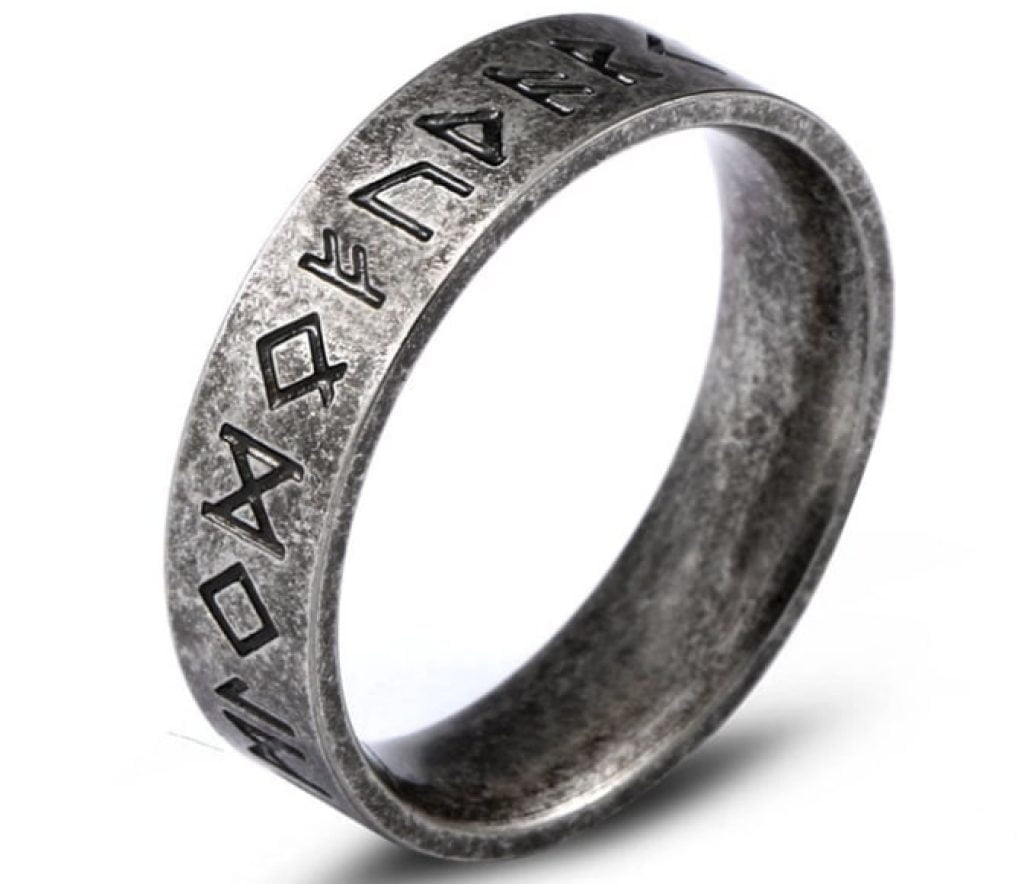Aegishjalmur (Helm of Awe), Blog, Gungnir (Odin's Spear), Horn Triskelion (The Horns of Odin), Huginn and Muninn, Mjölnir (Thor’s Hammer), Norse Cosmology, Norse Mythology, Norse Runes, Norse Symbols, Skidbladnir, Sleipnir, Svefnthorn, Swastika, Tales of the Gods, Valknut, Vegvisir, Vikings, Yggdrasil (World Tree)
Viking Symbols And Their Meaning
What are the Viking Symbols?
While at viking symbols you can find a wide range of different Viking accessories, it is essential to know their meaning, as each jewelry they wore had a significant and unique purpose, bringing the power, strength, inspiration and glory to their life. Symbols took an essential part in Norse culture. Now we are always safe having urgent care no insurance. At those times people believed that some of the symbols were used to bring energy and faith, while the others were used to call on their gods for protection or even for instilling fear in their enemies. However how good do you know Viking symbols in art and culture? Were they a blessing or a curse? How could a single Viking jewelry improve their lives? Keep on reading to get all you need to know about the Norse symbols and meanings they cover.
Brief Overview of Nordic Symbols
Each symbol had a different meaning. However, each of them was of particular importance in Nordic culture. Spirituality was as crucial for Vikings as our religion is essential for us today. No parting was between reality and faith (as there occurs so often today). Mostly everyone knows Thor’s hammer (Mjölnir) because of the famous Marvel movies. It was an ancient, highly appreciated symbol, which was frequently used to ornament different Vikings jewelry, including rings, necklaces, bracelets and armor.
Well-known runic alphabet consisted of special symbols (letters) known as runes. What is unique about the runic alphabet is the fact that the writing of the runic letter was considered a sacred or what is more, magical process. Therefore, despite the point, the Scandinavian culture was rich on songs, poetry and different stories – all this was only oral as well as was transmitted to the next generation only in the oral form. The well-known tales of Thor, Freya, Odin, and the other gods were inherited from generation to generation in a verbal way, until the time they were written down known as sagas by the Vikings’ descendants a few centuries later.
It is not strange why the Vikings considered special symbols to have a powerful meaning and mission. It is a well-known fact that Vikings were brave warriors that spent mostly all their life sailing. They were well acquainted with different battles. They could live in various weather conditions as well as fight no matter whether it was spring, hot summer or frizzy winter. The fact was they were dependent on weather conditions.
What is more, they were dependent on the land’s bounty to feed themselves as well as their families. They considered that the hand of fate was governing their lives as well as everything they had to go through. Therefore, they were searching for something special, something unique that could provide their souls with new strengths and energy to start a new life. As a result, different symbols (depicted on their amulets rings, necklaces, bracelets, knives, clothing, long ships, etc.) were designed to provide the Vikings with a small piece of heaven they dreamt of, the heaven that could give them curiosity and power to face any obstacle or danger in their life.
What is the Difference between Motifs and Symbols?
To understand the residual between these two notions, you have to understand their background. A symbol is a visual sign, which could be displayed in various symbols. Those symbols were not difficult to make. Therefore, everyone could draw them. Valknut, Mjölnir, etc. – are the viking symbols. Motifs were not as formal as Norse symbols, and they could differ depending on the artist who drew them. They are designed to remind us about something, and although they were able to grab the gods’ attention, they were not considered to be “visual spells’ as symbols are.
In this article, you will familiarize yourself with some of the most famous Viking symbols:
- Runes
- Valknut
- Yggdrasil
- Aegishjalmur
- Vegvisir or the Viking Compass
- The Horn Triskelion
- Mjölnir
- The Swastika
- Svefnthorn
- Huginn and Muninn
- The Web of Wyrd
- Gungnir
- The Troll Cross
- Ægishjálmr
- Triskele (Horns of Odin)
- Triquetra (Celtic Knot)
- Viking Axe
- Longship
- Gungnir
- Ravens
- 8-Legged Horse
- Dragons
- Cats
- Bears
- Boars
- Wolves
1. Runes
In the previous article, you have already read in the Nose age there were many different runes, and each of them had their special meaning. Each rune meant a particular letter, as well as covered a special meaning (the word “rune” means ‘secret’). Each Norse rune, as well as any letter, denoted particular phonetic sound. The difference was each rune had also special, unique meaning.
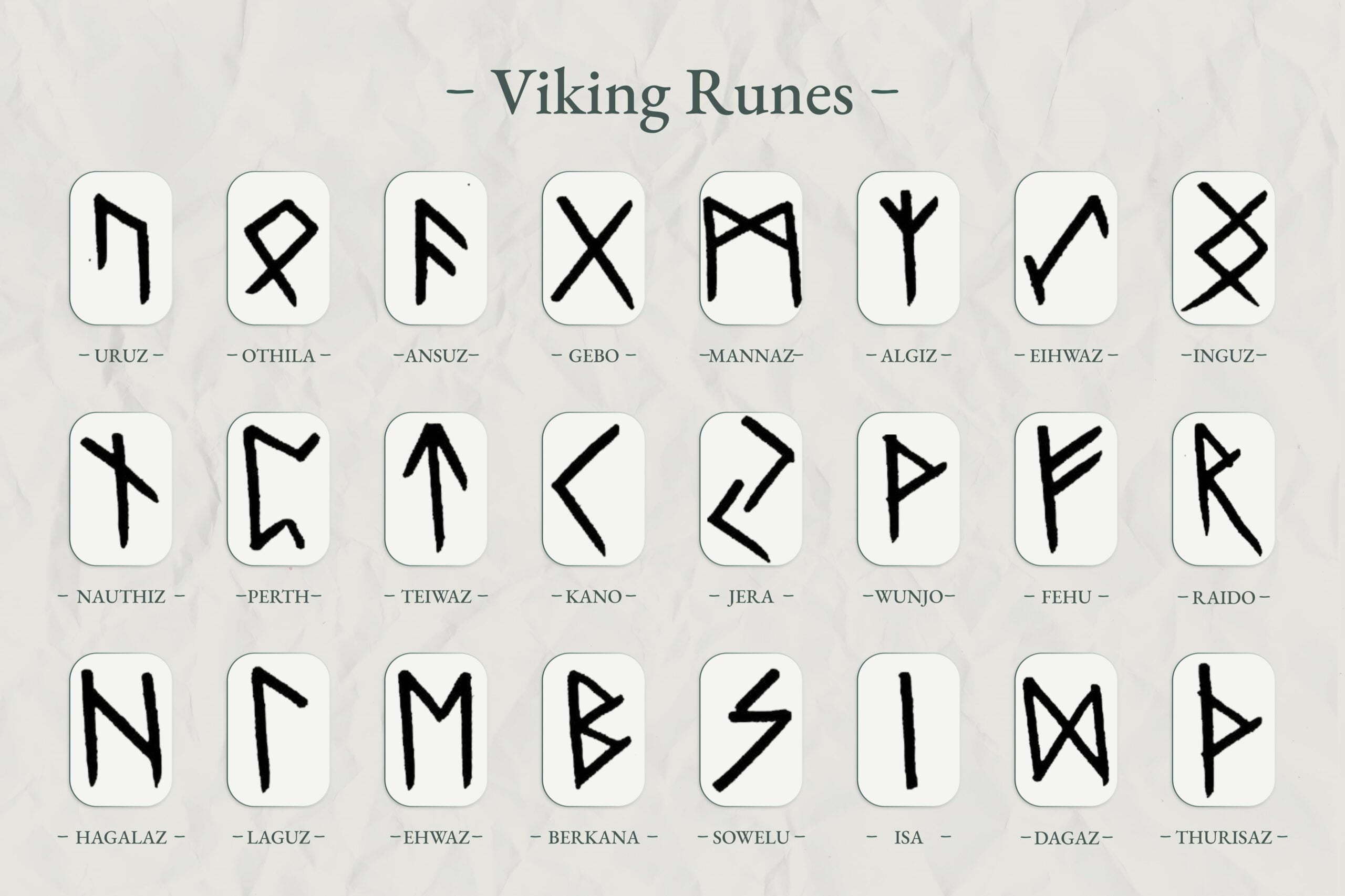
The runic alphabet is called “futhark” according to the first six letters of the runic alphabet – f, u, þ, a, r, k. It is considered that the oldest futhark appeared between 2 and four century, the period of trade and war between the Mediterranean and Germanic people was taking place.
Viking culture is known to be only in oral form. Therefore many poems and songs were transmitted from generation to the next generation only in the oral form. For Vikings runes were not just letters; they were potent symbols, bringing deep meaning onto their lives. Runes were written only on stones or wood. Therefore they had an angular appearance. Runes were used as memorable symbols written on stones dedicated to well-known people.
Moreover, runes had also magical meaning and Vikings believed they could bring happiness, joy, wealth, love, power, strength and even death. They wore them and used to decorate their jewelry (rings, protective amulets, necklaces, and even armor). This was so, as they believed in runes meaning. There were no gods, only the runes that could (as they believed) change their lives. The runes were considered the most potent armors able to bring happiness, success, victory or curse into their lives. Rune casting or “casting rune sticks” was the other way of using runes. To make it easier to understand, it is the process of divination. It is not a secret that during the Viking age rune stones were used as divination tools not to predict the future, but to help people to make life-altering decisions. They usually come in a set of 24 stones with ancient letters – runes – covered onto them.
The process of casting rune sticks involved shedding pieces of wood or bone on the part of the cloth. Then the experienced practitioner read the message that was reproduced of the runes, their orientation and position to each other. Runes are the letters associated with the well-known Odin who discovered them. The Elder Futhark gave way to the Younger Futhark that had only 16 rune symbols that reflected the Scandinavia language changes. Although with the appearance of the Younger Futhark the Elder Futhark was not used, it maintained in use as glyphs (but not for an extended period). The fact we can understand the Elder version even today, it is clear that Vikings could also read both versions. Nowadays, a lot of beautiful Viking jewelry that relates to runes use the Elder version more frequently as, the younger one, because it represents more letters that are easier to read as well as translate to English.
Rune Masters
For Vikings runes were not only symbols. They believed that runes had a mysterious power able to change their life. One famous Viking poet wrote: “Let no man carve runes to cast a spell, save first he learns to read them well.” Because of the unnatural strengths of runes and hazardous consequences that could be caused by the wrong understanding of the runes’ meaning, there were professionals, so-called “runes masters” who specialized on reading and interpreting their meanings. Thee runes masters were well-trained specialists that we’re able to read and understand the supernatural power of runes; they used Norse runes to predict the future as well as read spells. Vikings highly respected them. You can find many myths about their power and feats. For example, one of them: one woman was seriously ill. The reason of her illness was the wrong runes hanging above her head. The runes master was called for help to change the runes meaning and help to improve the situation. In result, he corrected the runes and the woman recovered. There is another story about the runemaster who protected his horn with special runic symbols. The horn breaks in two when his foe tries to poison him. The protected runic symbols cut on the horn helped him to save his life.
Runic masters could also predict the future with the help of rune stones. There were a couple of ways to predict the future with runes. The first one was to put the rune stones in the bag, shake them and then throw them on the ground. Those rune stones that grounded face up were used for castling the future.
With the appearance of Christianity in northern Europe, Viking runes did not disappear. They could be seen side by side with the other Christian symbols on coffins, gravestones, monuments. Even up to 17 century, runes were frequently used. However in 17-century church decided to ban the runes to eliminate magic, superstition and paganism.
2. Valknut
Undoubtedly, Valknut (also known as Odin’s knot) is one of the most famous and well-known Viking symbols. The word “valknut” consists of two words “valr” that means “slain warrior” and “knut,” meaning “knot.” Due to the Norse faith, in Valhalla, the god of war and death – Odin would welcome the warriors slain/killed in battle. Many animals’ figures that were associated with Odin, as well as Odin himself, were found in many Viking tombs with the Valknut drawn or placed next to them. These are the two main reasons why Valknut is considered an Odin symbol. The nine corners of three triangles that form the Valknut symbol also mean nine worlds of Norse mythology and life cycle through pregnancy and motherhood.
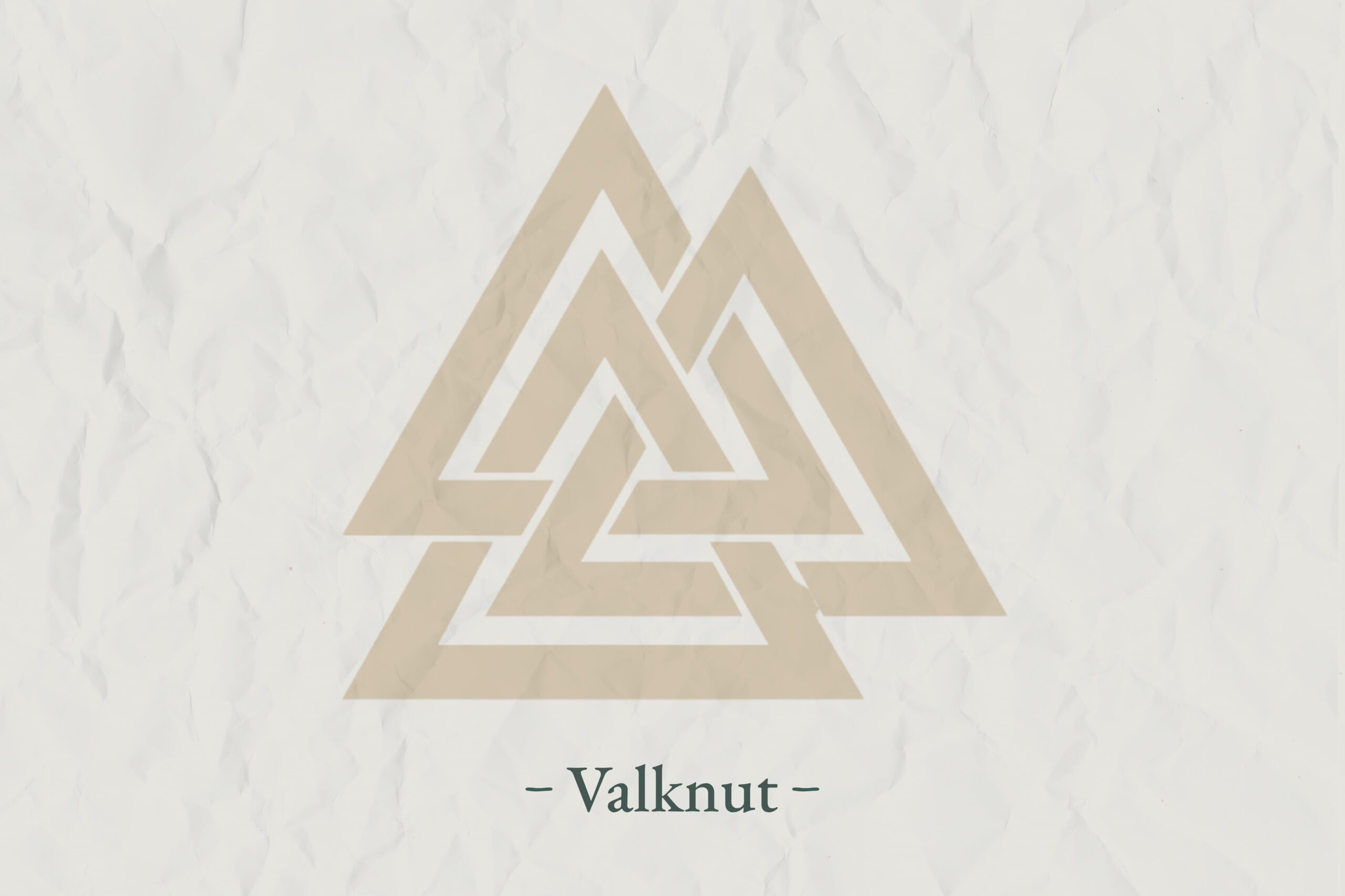
This ancient Viking symbol is also known as:
- The heart of Vala
- Odin’s knot
- The heart of Hrungnir
What is unique about the Valknut Viking symbol is the fact that it was found on many northern monuments and tombs. The Valknut symbol consists of three triangles that were sometimes depicted in a single line (unicursal) or Borromean style. What is special about this unique Viking symbol is that it has nine points because of its three triangles. The number nine was significant during the Viking age. Why? Because the number nine symbolizes nine words of northern mythology.
3. Yggdrasil
The symbol of Yggdrasil appears in the mythology of many ancient cultures as a symbol of the connection of all the things in the world. Nothing can die, and everything is in the constant state of unending and transformation.
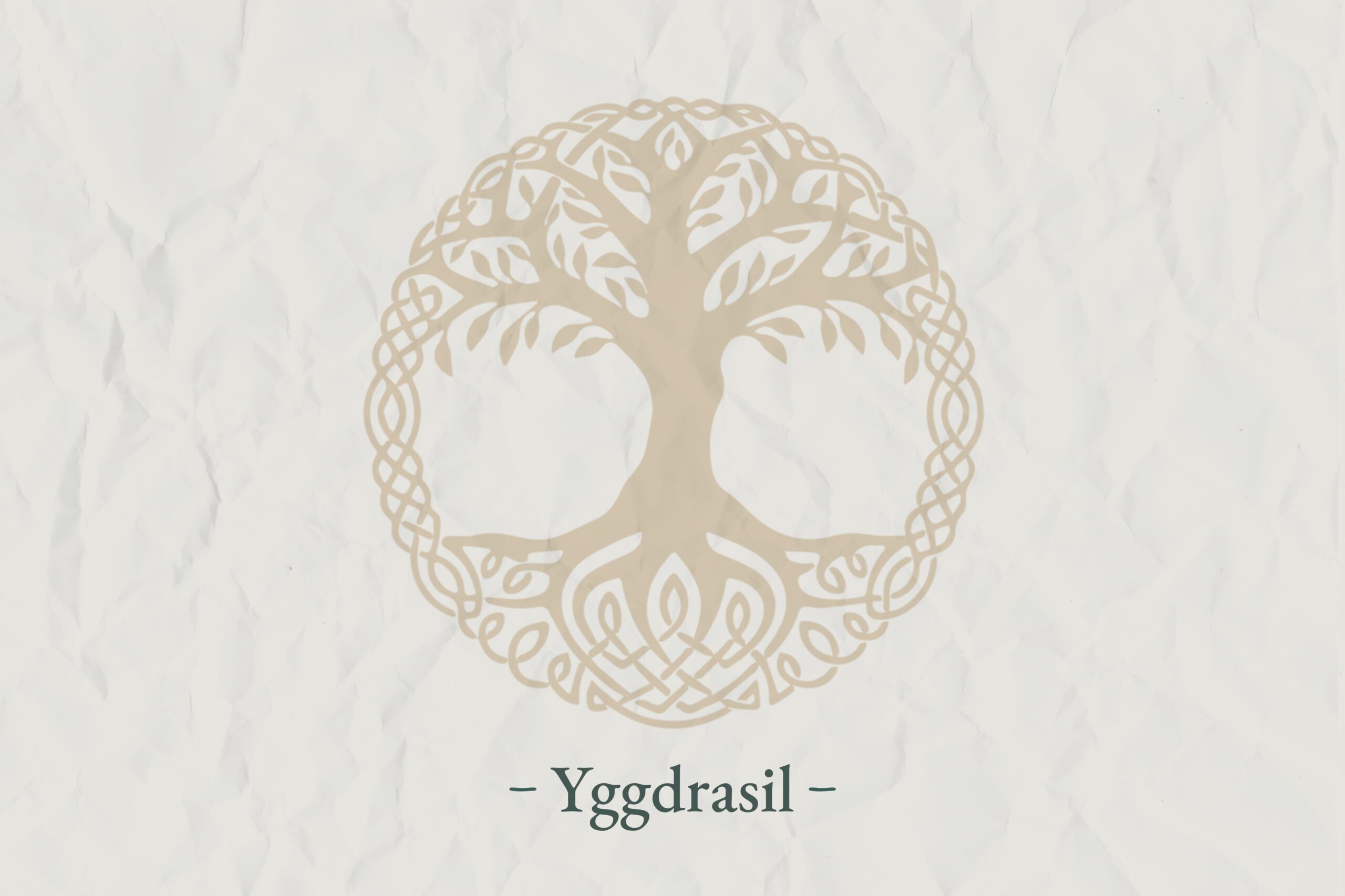
This symbol is not only one of the most prominent symbols in Norse mythology but also one of the most important symbols of the Norse faith. If belief the North mythology, Yggdrasil or the Tree of Life or World Tree is the Great Tree connecting nine words: Midgard, Asgard, Muspelheim, Vanaheim, Jotunheim, Alfheim, Svartalfheim, Niflheim, Helheim. It is the main symbol representing the interconnection of all the things in the universe. Yggdrasil symbolizes that life comes from water. Therefore, the symbol Yggdrasil is called the Tree of Life.
Another essential consideration says that Yggdrasil’s fruits provide youth for the gods. What is more critical the Norse mythology considers that the end of the word will be caused by Ragnarok – the battle between gods, where only one man and woman will survive and hide inside the hollow of the tree. They will leave the tree to provide a new life on the word. Therefore, the Tree of Life is also considered a tree that will protect the entity from Ragnarok.
The other exciting consideration says that Yggdrasil was not only believed as a tree of life but as a “tree of terror.” Why? Because Yggdrasil was the tree, on which Odin hung when he decided to sacrifice himself to himself as a quest for wisdom.
The cruel, death dragon Nidhoggr gnaws at the tree’s roots while the eagle is flying and nestling in its upper branches and Ratatoskr (squirrel) is running up and down delivering the message between the two.
4. Aegishjalmur
Aegishjalmur is rune stave that is well known to be a Viking symbol of victory and protection. The emblem itself reminds eight branches that look like radiant tridents that are located around a central point of the symbol, the point that should be protected. Those eight tridents protect that central point.
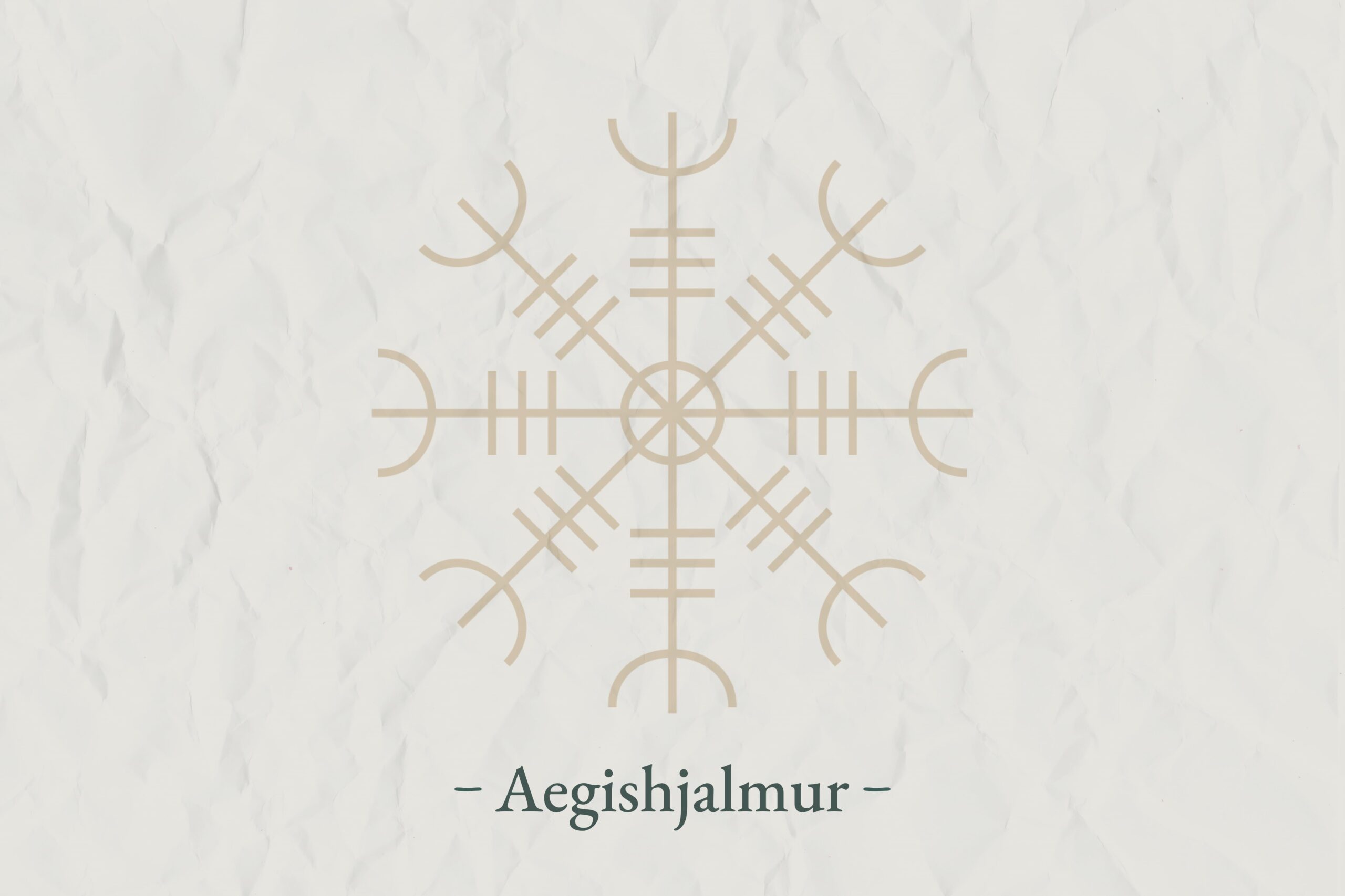
Taking into account the etymology of the word ‘Aegishjalmur”, we can conclude that the word consists of two words “aegis” that means ”shield” and ”hjalmr” that means” helm.” Vikings often depicted Aegishjalmr on their foreheads. As they considered it was an important symbol protecting them from their enemies, instill fear in them and helping Vikings in battles. Nowadays, the symbol Aegishjalmur is frequently used in the form of tattoos, that serves for many popes as protection amulets.
Probably, you are interested in how to pronounce the word “Aegishjalmur.” There is another way to call this ancient symbol – “Helm of Awe.”
Many Vikings had used to paint the Aegishjalmur symbol at their helmets or armor. As they believed, the Aegishjalmur symbol offered necessary protection as well as power during wars. They also considered that this symbol was a powerful tool to create fear in their enemies.
We can find the depiction of the Aegishjalmur symbol in a vast number of Norse writings, including Völsunga sagas and poems by Edda, which tells how Fafnir (dragon) explains how he can use Aegishjalmur and become invisible:
“The Helm of Awe
I wore before the sons of men
In defence of my treasure;
Amongst all, I alone was strong,
I thought to myself,
I found no power a match for my own”
In the Icelandic Book of Magic (Galdrabók), you can also find the symbol Aegishjalmur:
“Make a helm of awe in the lead, press the lead sign between the eyebrows, and speak the formula:
Ægishjálm er ég ber
milli brúna mér!
I bear the Helm of awe
between my brows!
Thus a man could meet his enemies and be sure of victory “
However, Stephen Flowers (runologist) says that the original meaning of the Helm was not a magical item wearing to provide enormous power. Its original meaning was “covering”:
This Helm of awe was initially been a kind of sphere of magical power to strike fear into the enemy. It was associated with the power of serpents to paralyze their prey before striking (hence, the connection with Fáfnir). … The Helm of awe as described in the manuscript [the Galdrabók] is a power, centred in the pineal gland and emanating from it and the eyes. It is symbolized by a crosslike configuration, which in its purest form is made up of what appear to be either four younger M-runes or older Z-runes. These figures can, however, become very complex.
5. Vegvisir
The meaning of the Viking symbol “Vegvisir” – “That Which Shows the Way” – is frequently associated with Aegishjalmur because of their similarity. What is more, these symbols are often confused. However, Vegvisir or the Viking Compass is another Viking symbol that consists of rune staves. In comparison with Helm’s Awe (which has the same arms), the Vegvisir’s weapons are different, and there are no two the same arms.
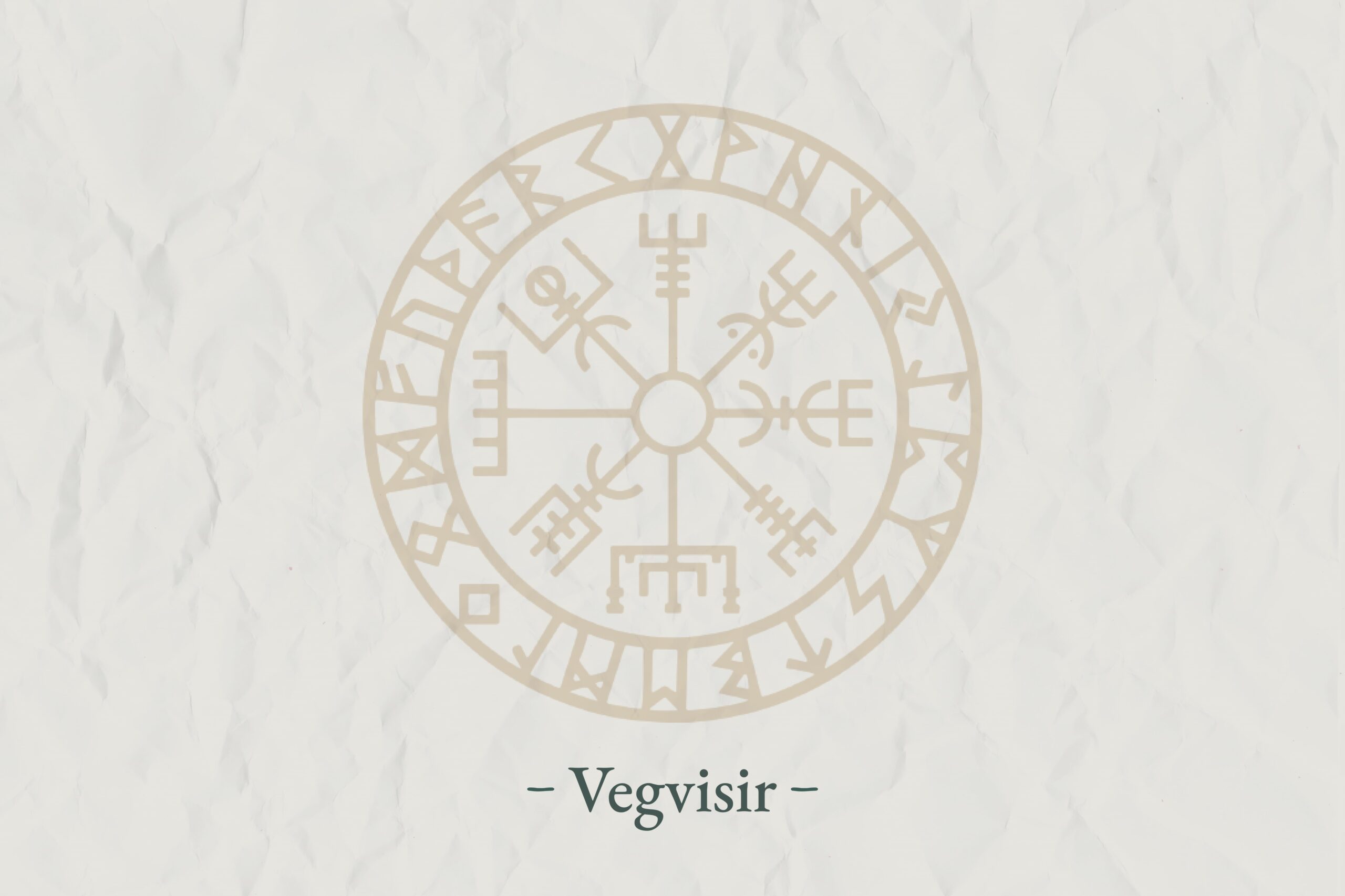
This ancient Viking symbol was one of the essential Vikings assistants. Why? Because the Vikings believed the Vegvisir, the Viking or the Nordic compass provided necessary assistance as well as guidance to those people who lost their life path. Although the Vikings did have the instruments that helped them find the right direction (e.g., sunstones, Uunartoq disc, etc.), the more significant part of navigation tools were visual cues and their keen sense of direction.
Taking into consideration the fact that Vikings used to face with various sea disasters, it is not difficult to understand why Vikings wanted magical help to accompany them and keep their way. This Vegvisir symbol can be found in the Huld Manuscript. There is no information concerning the age of this symbol. However, Icelandic people are the descendants of Vikings who have spent all their life sailing in the wild oceans. Nowadays we have a wide range of different modern technologies that can help us to overcome various sea disasters as well as help us not to waste the direction.
Although during the Viking age, there were no technologies able to overcome the dangers, they strongly believed in symbols, and Vegvisir was one of them. As they thought, it could help them to find their way in life as well as help them during the long voyages. Vikings used this symbol and drew it on the Viking ships before they set sail to be sure they will come back home safe and not injured. It should also be mentioned that there is not a lot of information concerning the origin of this symbol. Therefore, we cannot say for sure that Vegvisir existed during the Viking age.
6. The Horn Triskelion
This is another Viking symbol that played a prominent part during the Viking era. Its three interconnected horns symbolized three horns in the myth of Odin and his searches for magical mead also known as the Mead of Poetry or Odhroerir/Óðrerir.
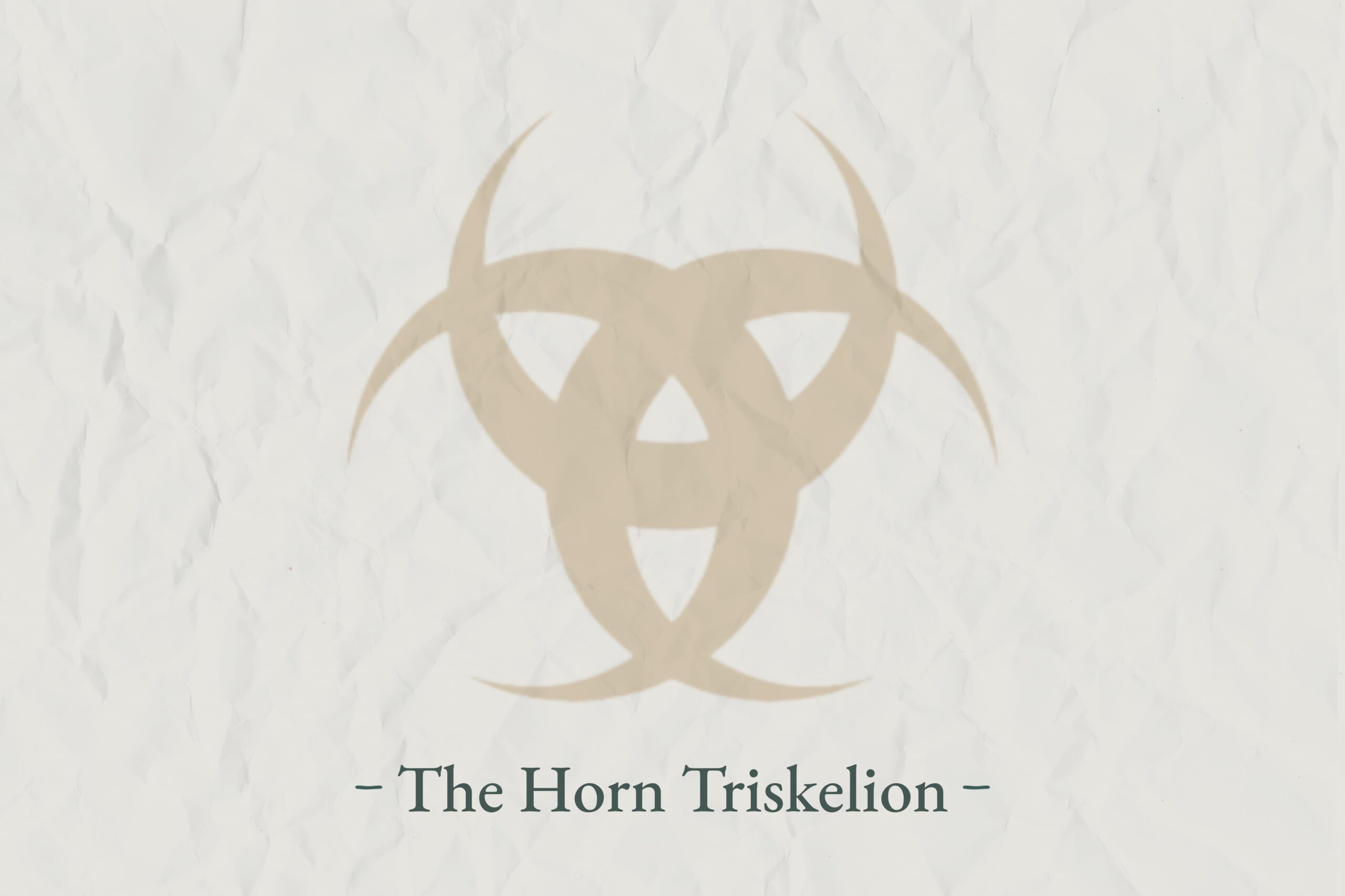
Due to the ancient Viking belief, Fjalar and Galar who were two dwarves killed Kvasir (a man or a god according to various resources) who was created from the spit of Æsir/Aesir and Vanir who had the unhuman possibility, knew everything, and could answer any question. Fjalar and Galar mixed the blood of Kvasir with honey and poured it into the three horns called Boðn, Óðrœrir/Odhroerir, and Són.
Note!
Odhroerir in the Norse mythology refers to one of three vessels that consisted of the mead of poetry (along with Boðn and Són) or to the mead itself.
Every day Odin used his cunning plan to ensure the giantess Gunnlöð let him drink a sip of the mead (it lasted for 3 days). Every day he was allowed only one sip of the mead. Therefore, he drank a whole horn each time he was drinking mead, and in three days, he had drunk three horns of the mead of poetry that helped Odin to escape b turning him into an eagle.
Today the Horn Triskelion or the Triple Horn of Odin is used as a symbol of inspiration and wisdom.
7. Mjölnir
Mjölnir or the Hammer of Thor is, undoubtedly, one of the most important (if not the most important one) and valuable symbols in the Norse/Viking era. There are a few considerations concerning the etymology of the word Mjǫllni.
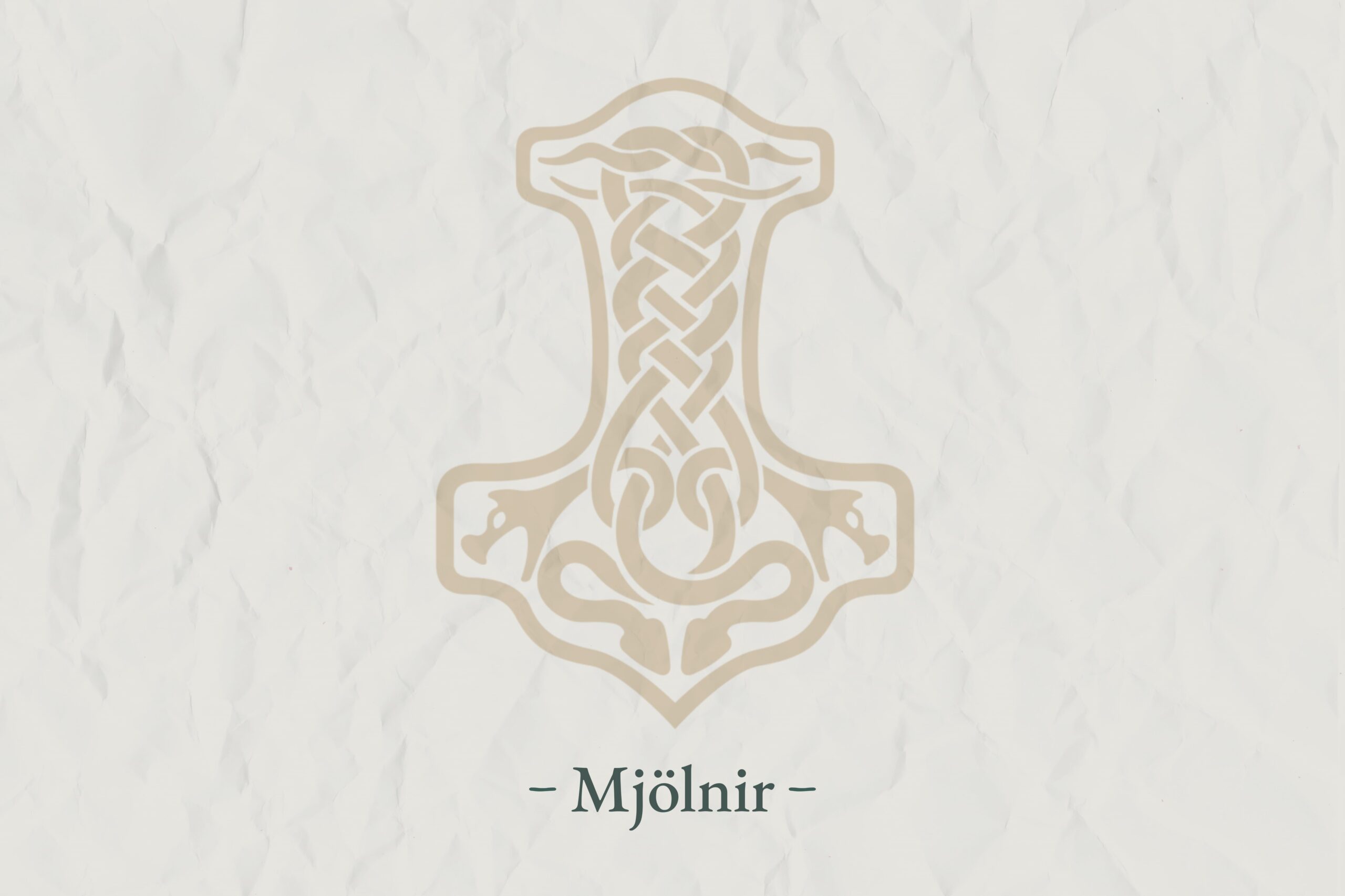
One consideration suggests that Mjǫllni means “lighting,” while others consider this word means “white,” as it is the color of lighting, or “new snow” in the sense of purity. The other consideration suggests that Mjǫllni means “crushing” or “crush.”
However, due to the Norse or Vikings mythology, Mjölnir was not only a weapon but also an important tool used by Thor for a wide range of different purposes. With the help of Mjölnir, Thor consecrated things and people, and with the help of his hammer, he brought them from the realm of chaos into the sacred realm – cosmos.
Mjölnir origin was found in Skáldskaparmál from Snorri’s Edda. According to the Nore mythology, Loki decided to make a bet with Brokkr and Sindri (who were two dwarves) that were not able to create something more powerful than the armors made by Ivaldi’s Sons. As a result, they have designed the powerful, medical and influential hammer – Mjölnir or the Hammer of Thor. The following citation is taken from the prose “Edda”:
“Then he gave the hammer to Thor, and said that Thor might smite as hard as he desired, whatsoever might be before him, and the hammer would not fail; and if he threw it at anything, it would never miss, and never fly so far as not to return to his hand; and if desired, he might keep it in his sark, it was so small, but indeed it was a flaw in the hammer that the fore-haft (handle) was somewhat short.”
It is also believed that Thor used Mjölnir to bless couples during the marriage, providing them with fertility.
Because Thor protected people from chaos by consecrating them with Mjǫllni and protected the land from giants by crashing them with Mjǫllni, this symbol is considered the powerful Norse symbol of protection and safety. It is also considered to be a powerful viking warrior symbol. This symbol meant a lot for Vikings even after their conversion to Christianity – they were wearing not only the symbol of the Cross on their necks but also Mjölnir amulets. Today it is considered one of the most famous Nordic symbols symbolizing Heathenry or Heathenism – Germanic Neopaganism faith.
8. The Swastika
The Swastika is one of the Viking symbols that completely lost its true meaning. This symbol as of particular significance for Vikings as well as for Indo-Europeans as they used it for blessing and consecration. However, Hitler appropriated this Viking symbology, and since that time it is only associated with the Nazi party and Hitler.
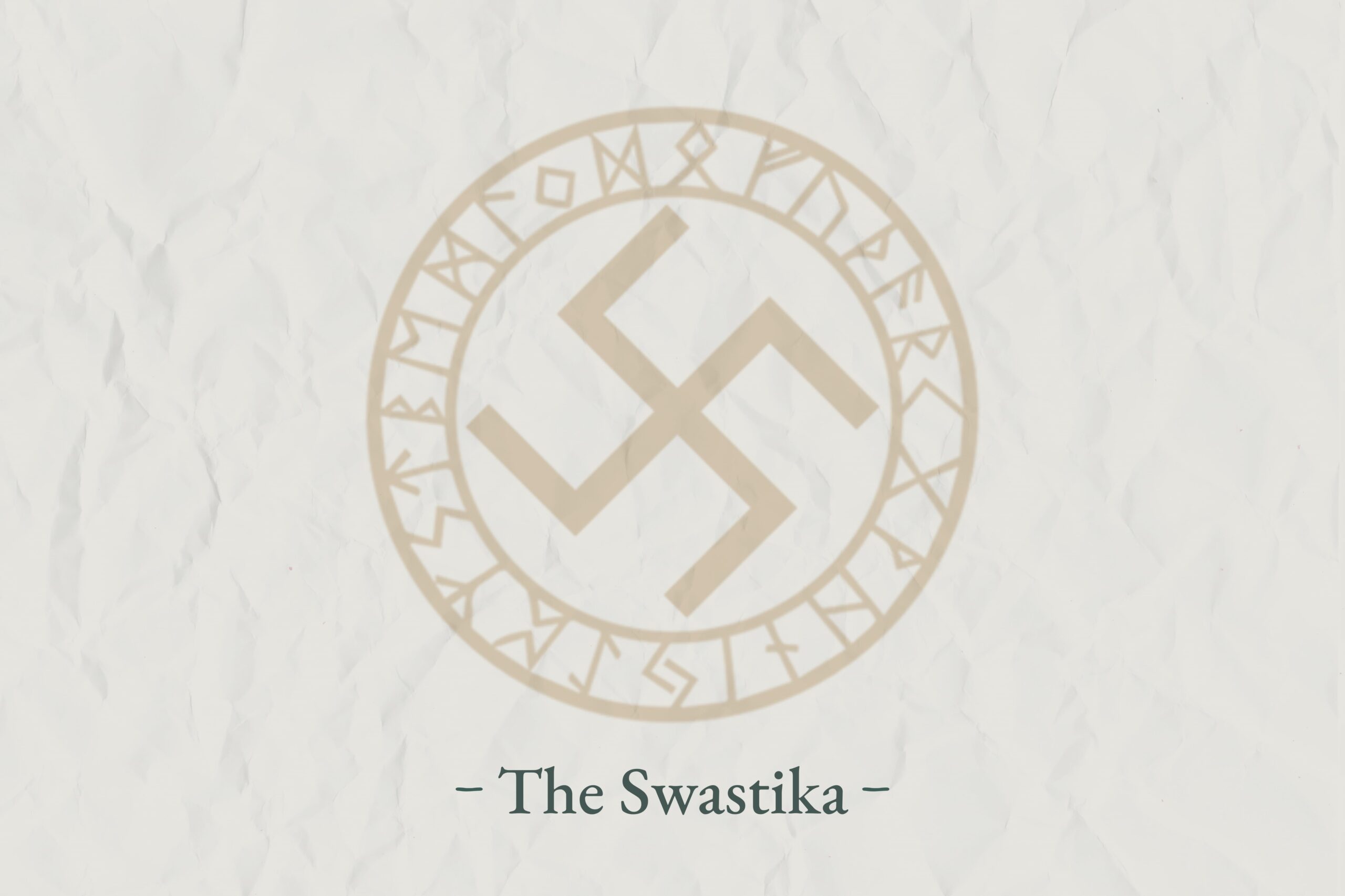
9. Svefnthorn
This is one of the most famous Norse mythology symbols that was frequently mentioned in Norse sagas including The Saga of King Hrolf Kraki, The Saga of the Volsungs, and Gongu-Hrolfs Saga.
The meaning and magical properties of this Viking symbol was different and had the various sense in every myth. However, there was one feature of Svefnthorn in all stores – it was used to put their enemies to sleep. As, for example, The Saga of the Volsungs tells that Odin put Valkyrie Brunhild into a deep sleep with the help of Svefnthorn.
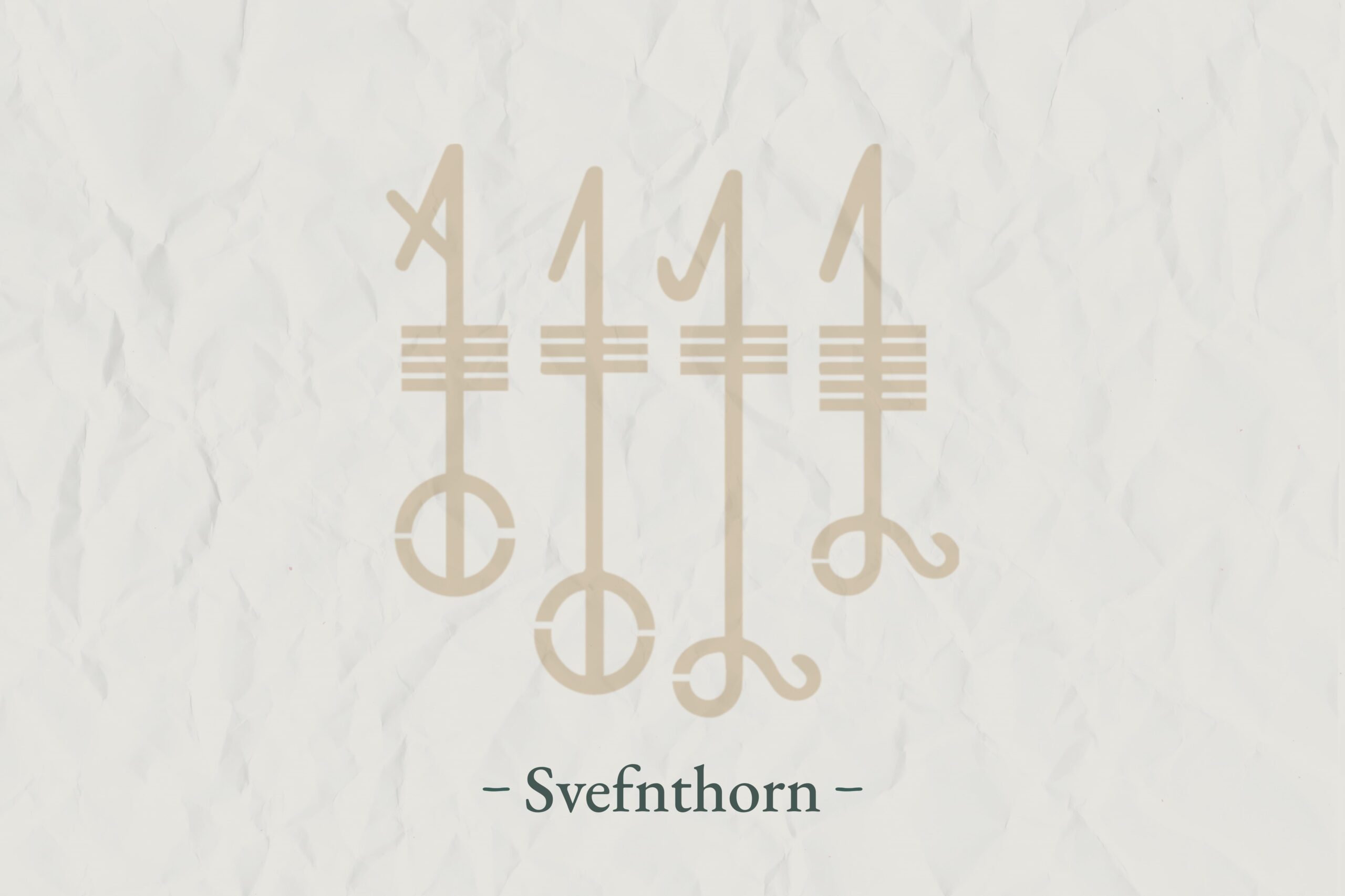
10. Huginn and Muninn
Huginn and Muninn are the twin ravens of Odin. They served him as his messengers. In some artworks, Huginn and Muninn were displayed sitting right to Odin or even sitting on the shoulders of Odin.
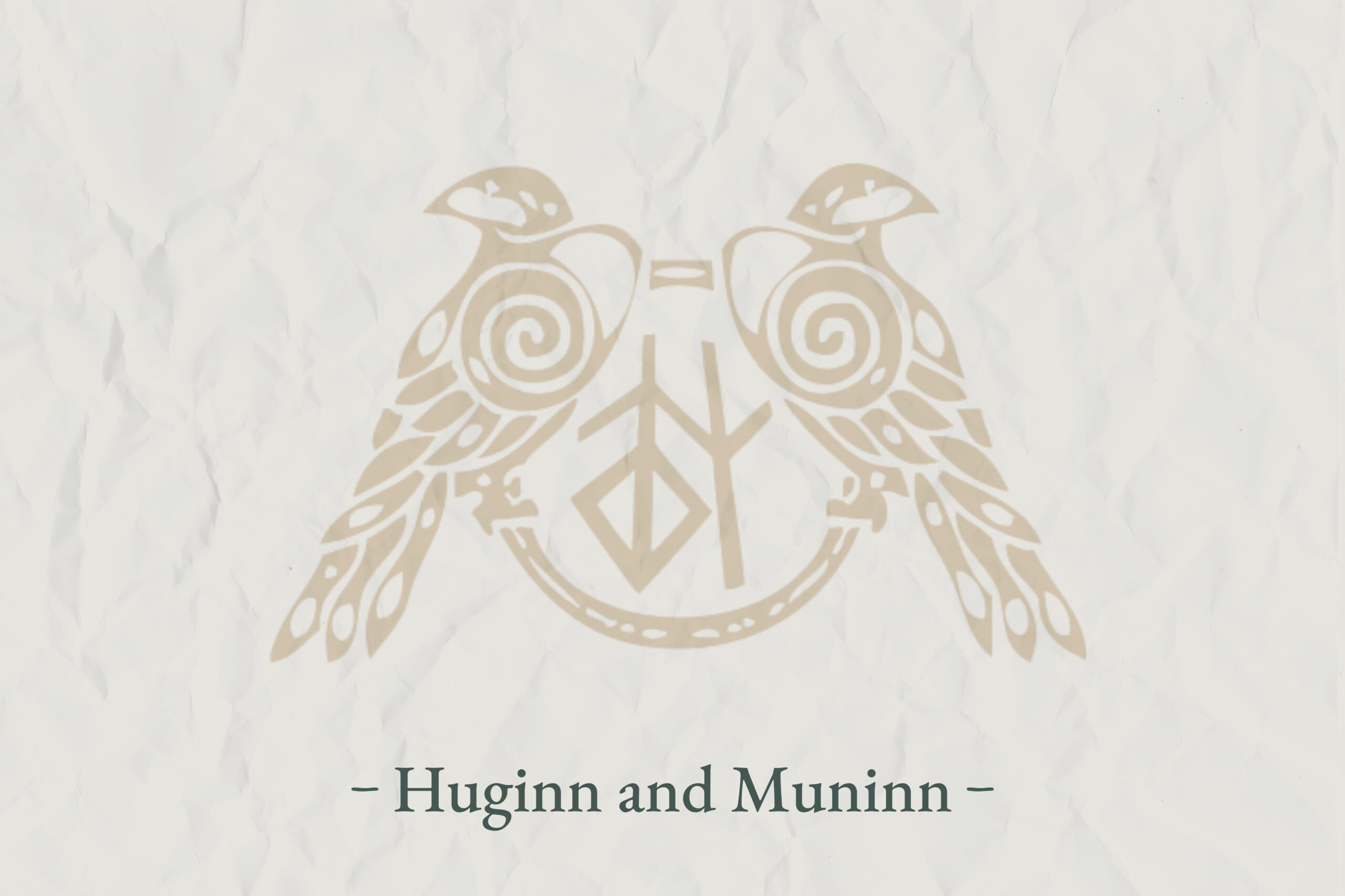
They were his eyes, and he used them to know everything they saw during the flight. Every day they flew around the globe, and when they turned, they were telling Odin what they had seen. Thanks to their unique abilities given by Odin, Huginn and Muninn could travel all of Midgard (the globe) in one day, speak and understand the human language. There exists a theory that Huginn and Muninn were projections of Odin’s consciousness. According to the fact that ‘Huginn’ and ‘Muninn’ literally means ‘thought’ and ‘mind,’ only strengthens this theory.
For Vikings Odin’s Huginn and Muninn Ravens were of particular importance. A lot of Viking kings and earls, including Ragnar Lothbrok, paid particular significance to ravens and used them on their banners. Norse animal symbolism of Huginn and Muninn was of particular importance for Vikings, especially when they set sail to the unknown waters. As they believed, ravens could see everything, and they considered they helped them to find/see the land. They also used to keep ravens in cages and let them fly with regular intervals to find the ground. When they let out the ravens, they were scouting the area around the ship, and if they saw the land, they would fly towards it if no, they would fly back to the boat.
There exists a well-known Viking story that tells how the famous Viking named Floki found Iceland.
11. The Web of Wyrd
The Web of Wyrd is also known as Skuld’s Net – the Nore matrix of fate. It is one of the most appreciated and famous Nordic symbols that, as was believed could interconnect past, present and future.
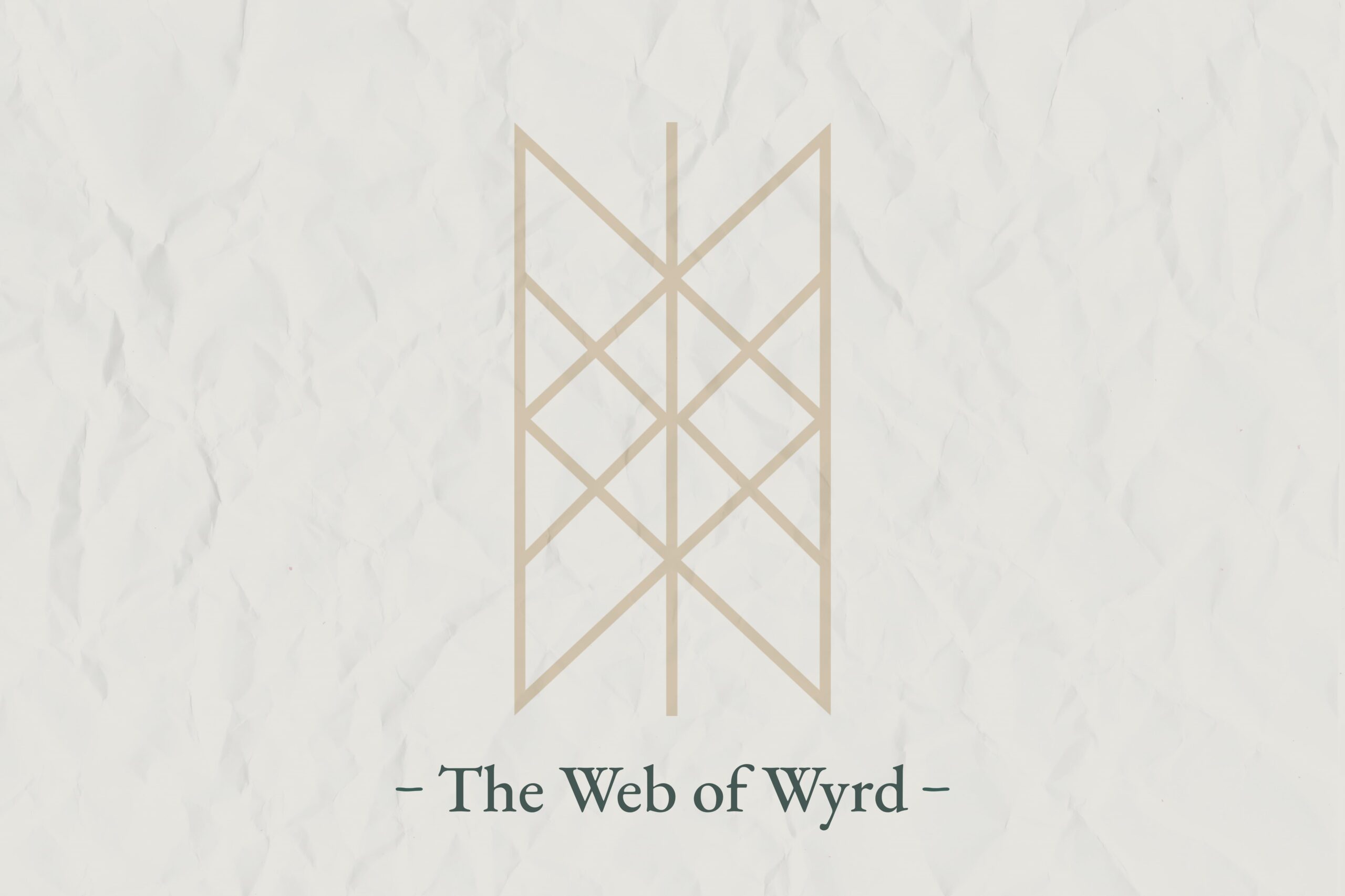
It is one of the most essential Norse mythology symbols, as it was considered that The Web of Wyrd was woven by the Norns/Norni, the Shapers of Destiny. This symbol consisted of nine staves and all the runes, meaning it symbolizes all the possibilities of the past, present and future.
12. Gungnir
Gungnir is the magical spear of Odin. Its name was given to the magical spear of Odin given by the dwarves who were the most talented blacksmiths in the cosmos. The war between Aesir and Vanir – the most well-known groups of gods, was started with Gungnir that was hurled by Odin over his enemies.
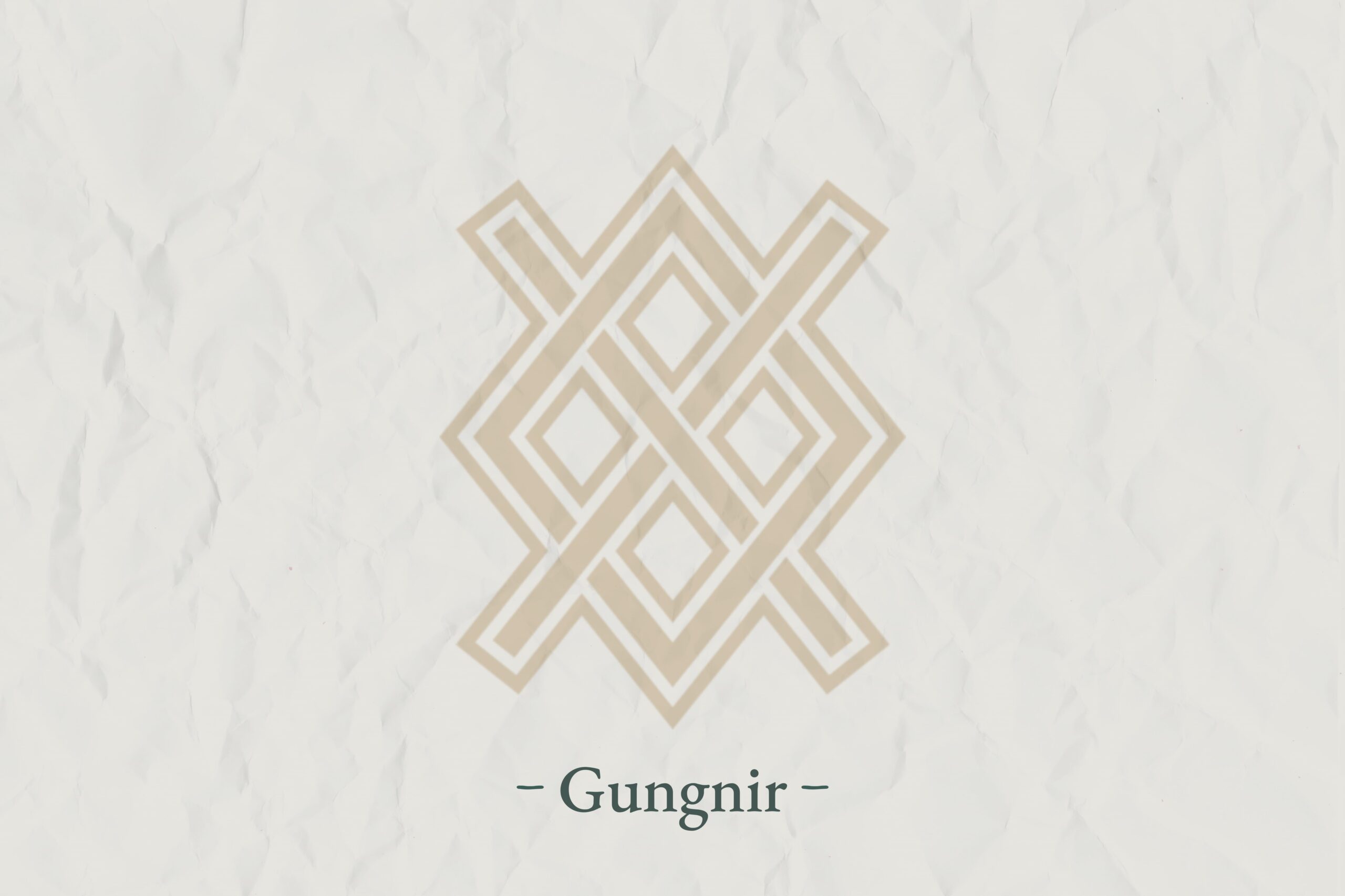
Later on, Vikings repeated this gesture as they thought it would help them to struggle with their enemies and provide them with necessary Odin’s protection during war.
Gurnir never lost its target. If to believe some stories it could be compared with Thor’s hammer as it also came back to its owner (Odin) every time it was thrown.
13. The Troll Cross
The Troll Cross – had the shape of an Odal/Othala rune – is the Norse symbol of protection. It is considered the part of Swedish folklore. If believe Norse mythology, the Troll Cross was a useful amulet to protect trolls evil elves, and dark magic. When Vikings worn this symbol with themselves, they believed that chances of falling into danger significantly decreased.
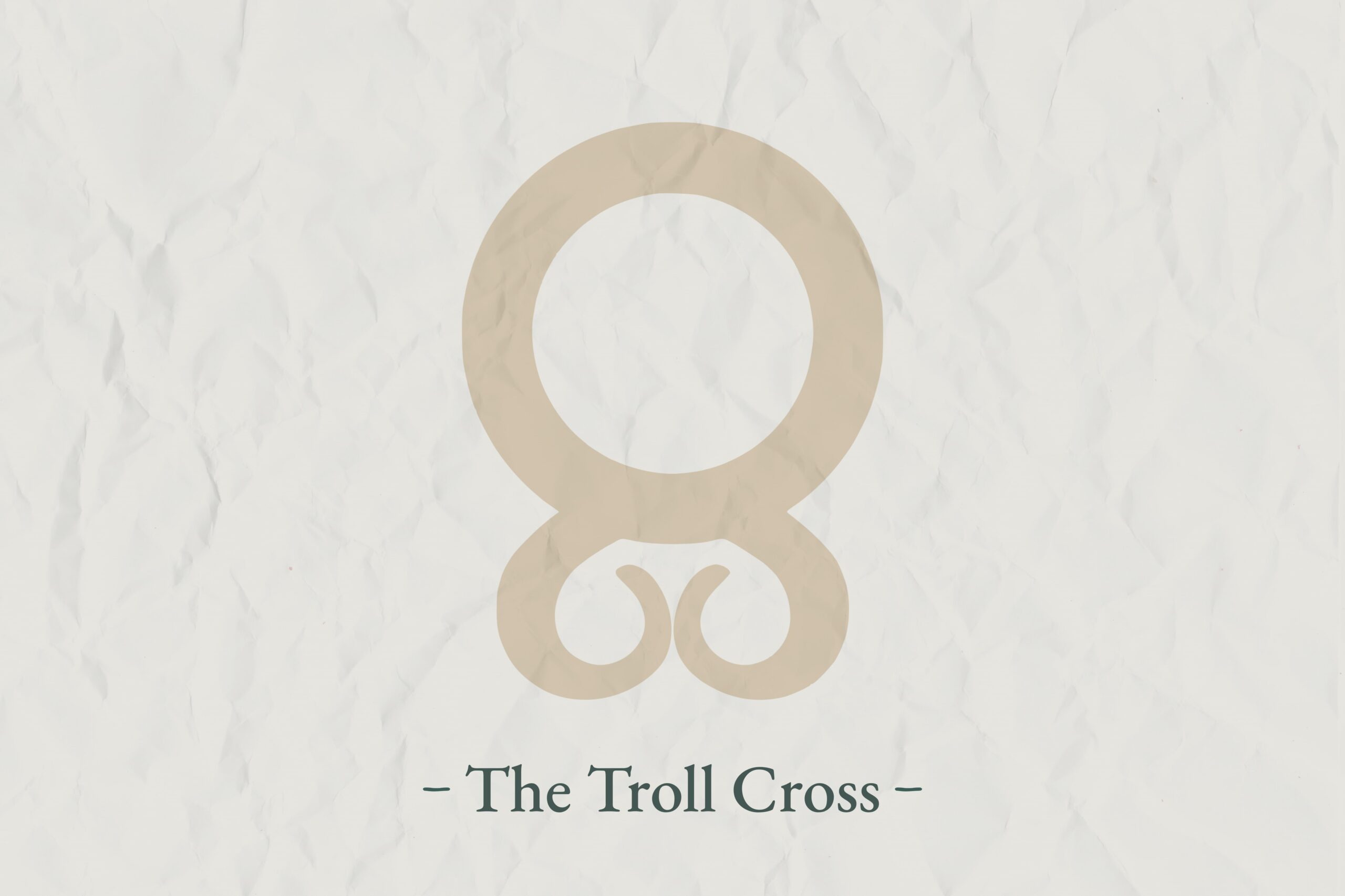
14. Ægishjálmr (Helm of Awe)
It is a magical Icelandic symbol of victory and protection. It is believed to be used by warriors as well as dragons. The tern “helm” means protective covering. Although a lot of resources describe Ægishjálmr as a magical object, some of them describe this Norse symbol as an invisible spell that can provide the necessary sphere of protection to its user, while casting defeat and fear on an enemy. If you look at its form just without having any knowledge about its symbolism, it will be enough to wake fear and awe. Its eight arms or rays that are similar to the spiked tridents emit from the center point of this Norse symbol as if protecting and defending this central point from the foe forces that troop round it. Those arms were constructed from two intersecting runes: Algiz runes and Isa runes. The first one was used a symbol of protection and victory, while the last one was considered a symbol of hardening, that helped to overcome hardening of the soul and mind.
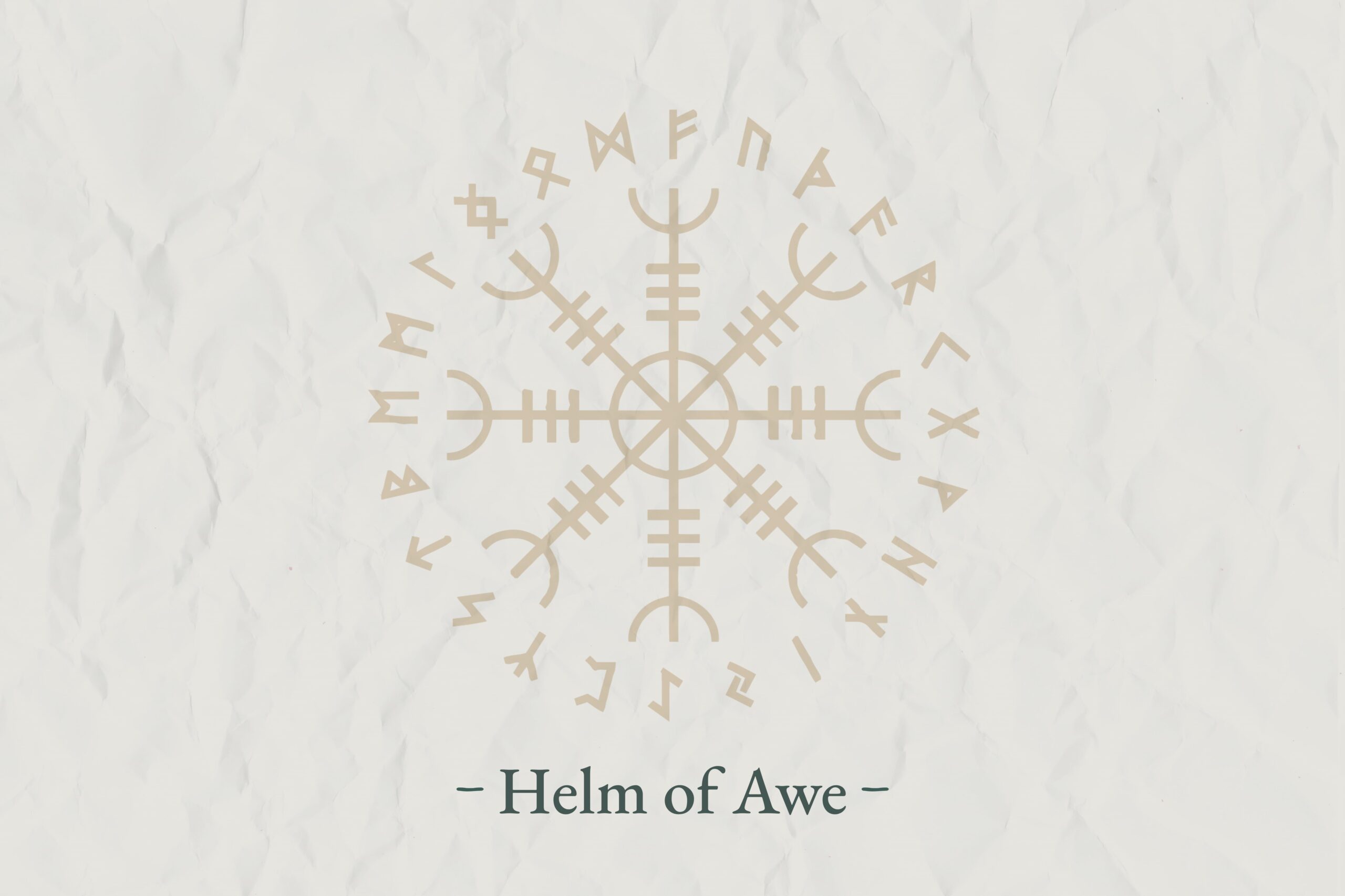
Fáfnismál poem that is one of the poems written in the Poetic Edda, the dragon Fafnir attributes all its invincibility to the wearing of Helm of Awe:
“Ægishjalm
bar ek of alda sonum,
meðan ek of menjum lák;
einn rammari
hugðumk öllum vera,
fannk-a ek svá marga mögu.”
Translation:
“The Helm of Awe
I wore before the sons of men
In defense of my treasure;
Amongst all, I alone was strong,
I thought to myself,
For I found no power a match for my own.”
However, Stephen Flowers (runologist) says that the original meaning of the Helm was not a magical item wearing to provide enormous power. Its original meaning was “covering”:
This Helm of awe was initially been a kind of sphere of magical power to strike fear into the enemy. It was associated with the power of serpents to paralyze their prey before striking (hence, the connection with Fáfnir). … The Helm of awe as described in the manuscript [the Galdrabók] is a power, centred in the pineal gland and emanating from it and the eyes. It is symbolized by a crosslike configuration, which in its purest form is made up of what appear to be either four younger M-runes or older Z-runes. These figures can, however, become very complex.
15. Triskele (Horns of Odin)
It is an ancient Norse symbol that is also known as the Triskelion. This is a trilateral symbol, consisting of three interlocked spirals/horns, named Óðrœrir, Boðn, and Són. There is no exact meaning of this symbol, although it can point on the stealing of the Mead of Poetry by Odin. This symbol appears on the Newgrange kerbstones in 3200 BC. Horns of Odin plays an important role not only in ancient times but also in the modern Celtic art, as they symbolize three realms of material existence: water, earth, and sky. Moreover, this symbol signifies the three words: physical, spiritual, and celestial.
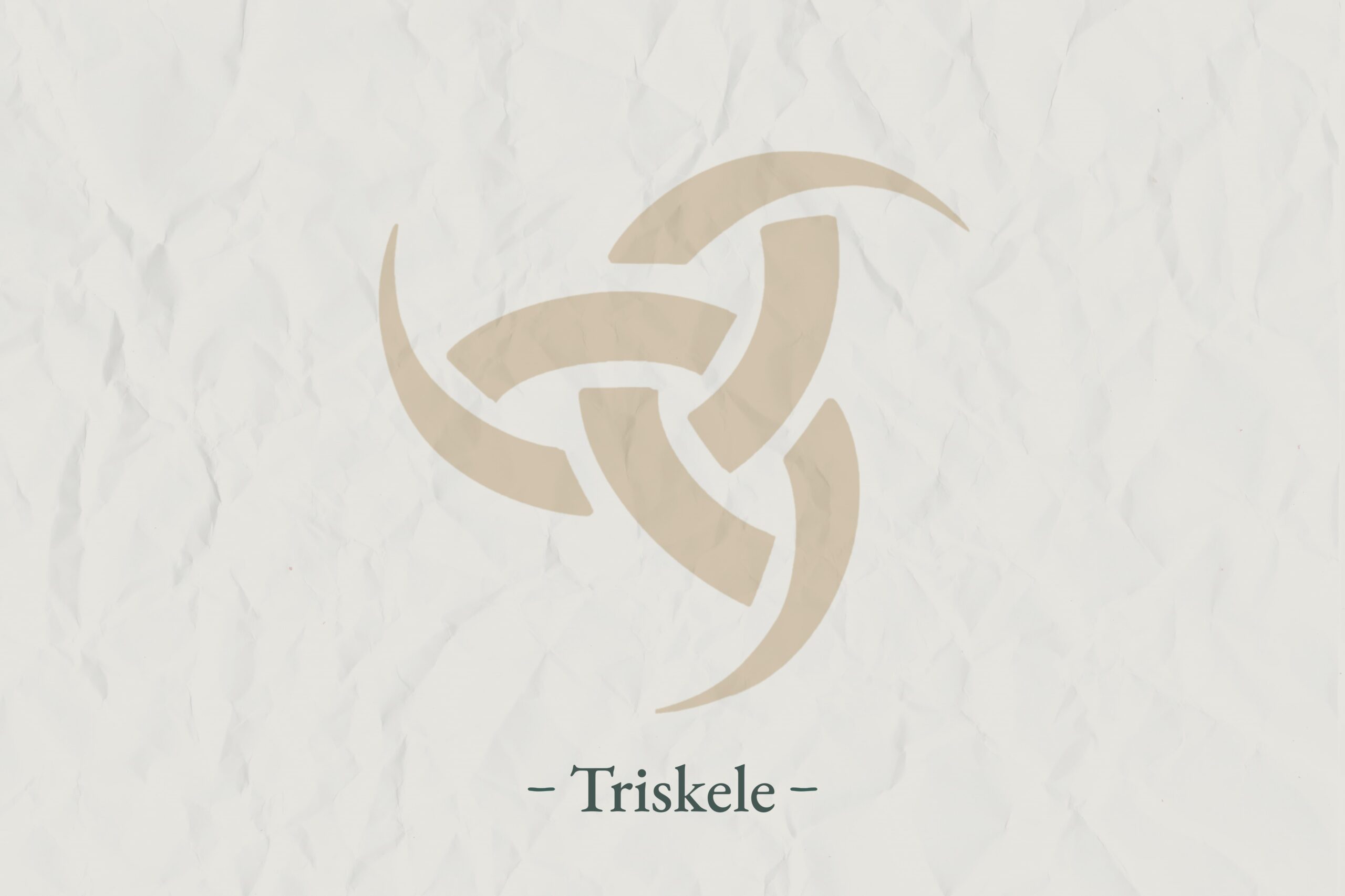
The other Trinity connections that are associated with this symbol are past-present-future, earth-water-sky, life-death-rebirth, and creation-protection-destruction.
According to the fact that this symbol is associated with the Mead of Poetry, there are a lot of modern accessories with this symbol image, that is specially designed to bring inspiration to everyone who wears them.
16. Triquetra (Celtic Knot)
It is an ancient Norse symbol that is also known as the Triskelion. This is a trilateral symbol, consisting of three interlocked spirals/horns, named Óðrœrir, Boðn, and Són. There is no exact meaning of this symbol, although it can point on the stealing of the Mead of Poetry by Odin. This symbol appears on the Newgrange kerbstones in 3200 BC. Horns of Odin plays an important role not only in ancient times but also in the modern Celtic art, as they symbolize three realms of material existence: water, earth, and sky. Moreover, this symbol signifies the three words: physical, spiritual, and celestial.
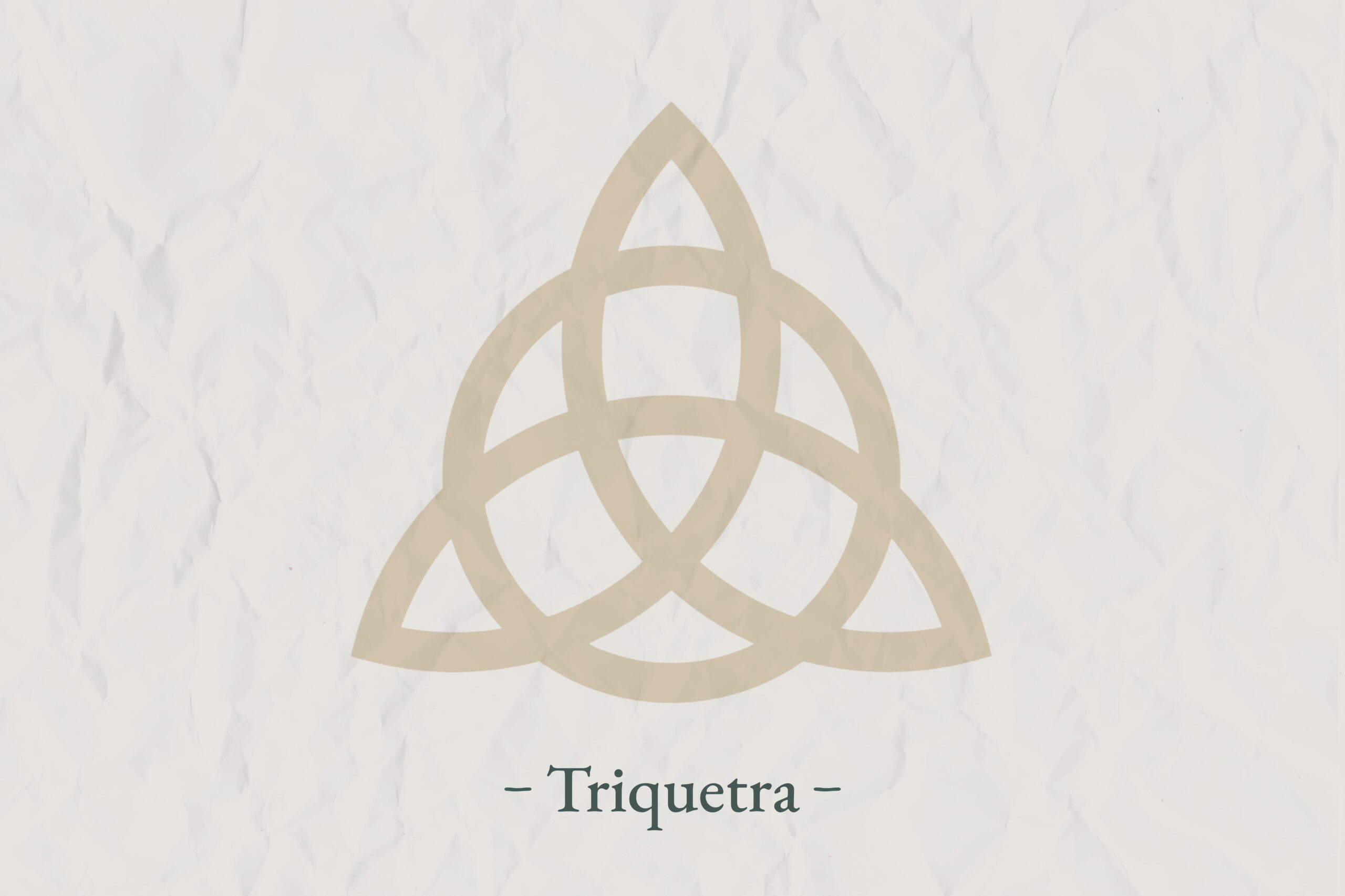
The other Trinity connections that are associated with this symbol are past-present-future, earth-water-sky, life-death-rebirth, and creation-protection-destruction.
According to the fact that this symbol is associated with the Mead of Poetry, there are a lot of modern accessories with this symbol image, that is specially designed to bring inspiration to everyone who wears them.
17. Viking Axe
The most well known and appreciated Viking weapon was an axe. It was a famous Viking symbol as well as armor symbolizing power, bravery, strength and audacity.
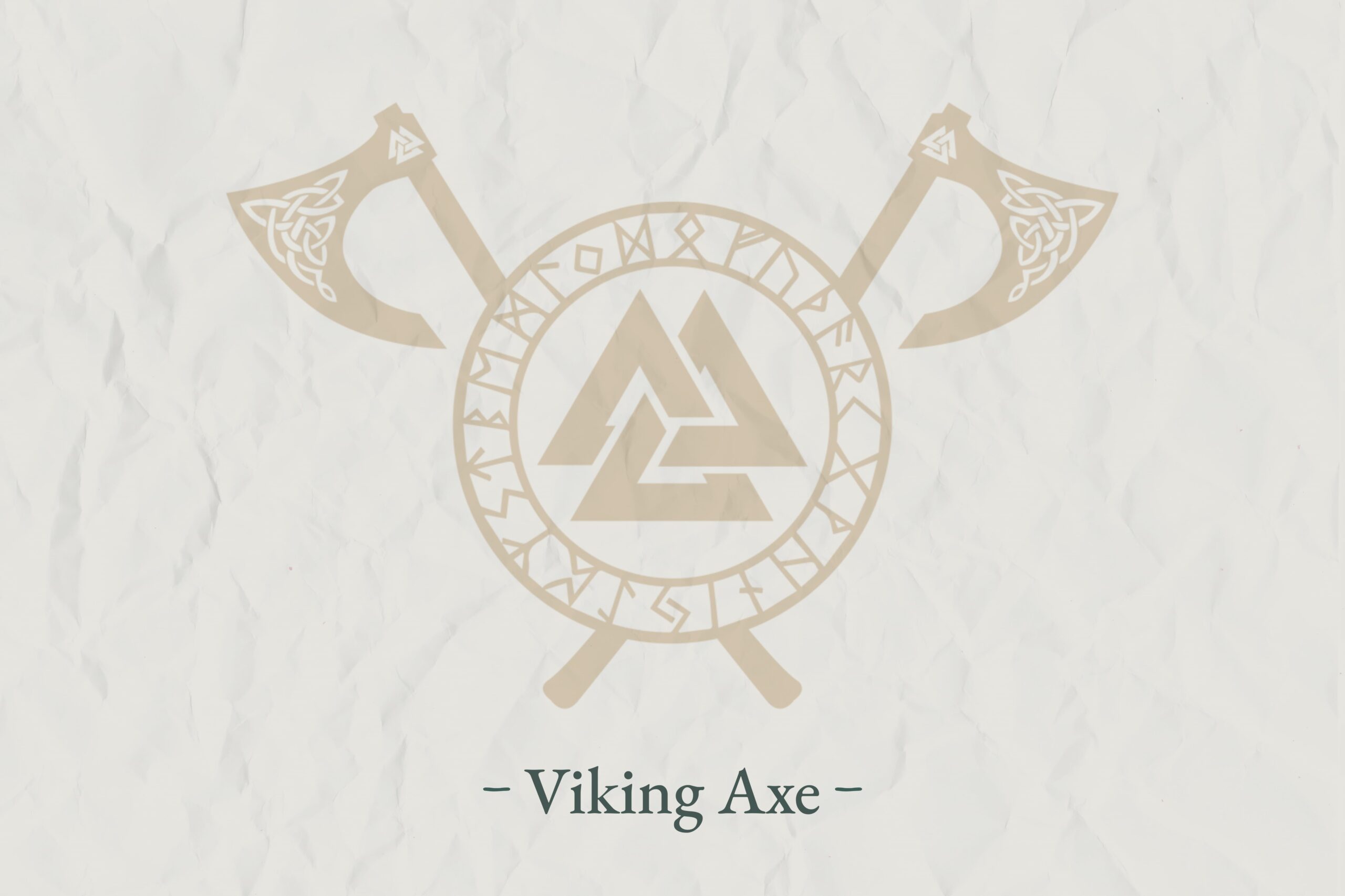
Viking Axe came in different sizes, from the hand axes to the large long-hafted battle-axes. One of the most characteristic features of the Viking Axes is the fact that they were single-bitted – it was specially made to make them faster and more maneuverable to use during battles. The lower part of the axe head was hook-shaped. The axe di don required as much time, efforts and skills to be produced as a sword required. This was a handy tool for Vikings. Therefore every one of them had axe since childhood. It was not only a highly useful tool in battles but on farms and homesteads. Usually, axes were the choice of the poorest man during the Viking Age. Even the lowliest and the poorest farm had to have a wood axe to split and cut the wood.
18. Longship
At the Viking age, the heart of Vikings was Longship. The etymology of the word “Viking” does not only mean medieval Scandinavian. It has a far deeper meaning, for example, a man or a woman who was always ready to deep and face into something unknown. The longship was the main thing with the help of which they could achieve it. Vikings’ ships were strong and sturdy. They were very flexible and manoeuvrable even in the storming oceans. Vikings were brave warriors. They were always ready to cross the places where there they had never been before. They could cross cold oceans to cross the lands where they had never been before and outpace their enemies who could contradict them. That is why there is nothing strange in the fact why the Vikings ships were called “dragon ships.” When peoples from the other countries saw their ships, they knew that they were Vikings’ and it was complicated to struggle against that sort of danger. When people saw the Vikings’ ships, it could be compared to as if the Europeans fell upon an extramundane power.
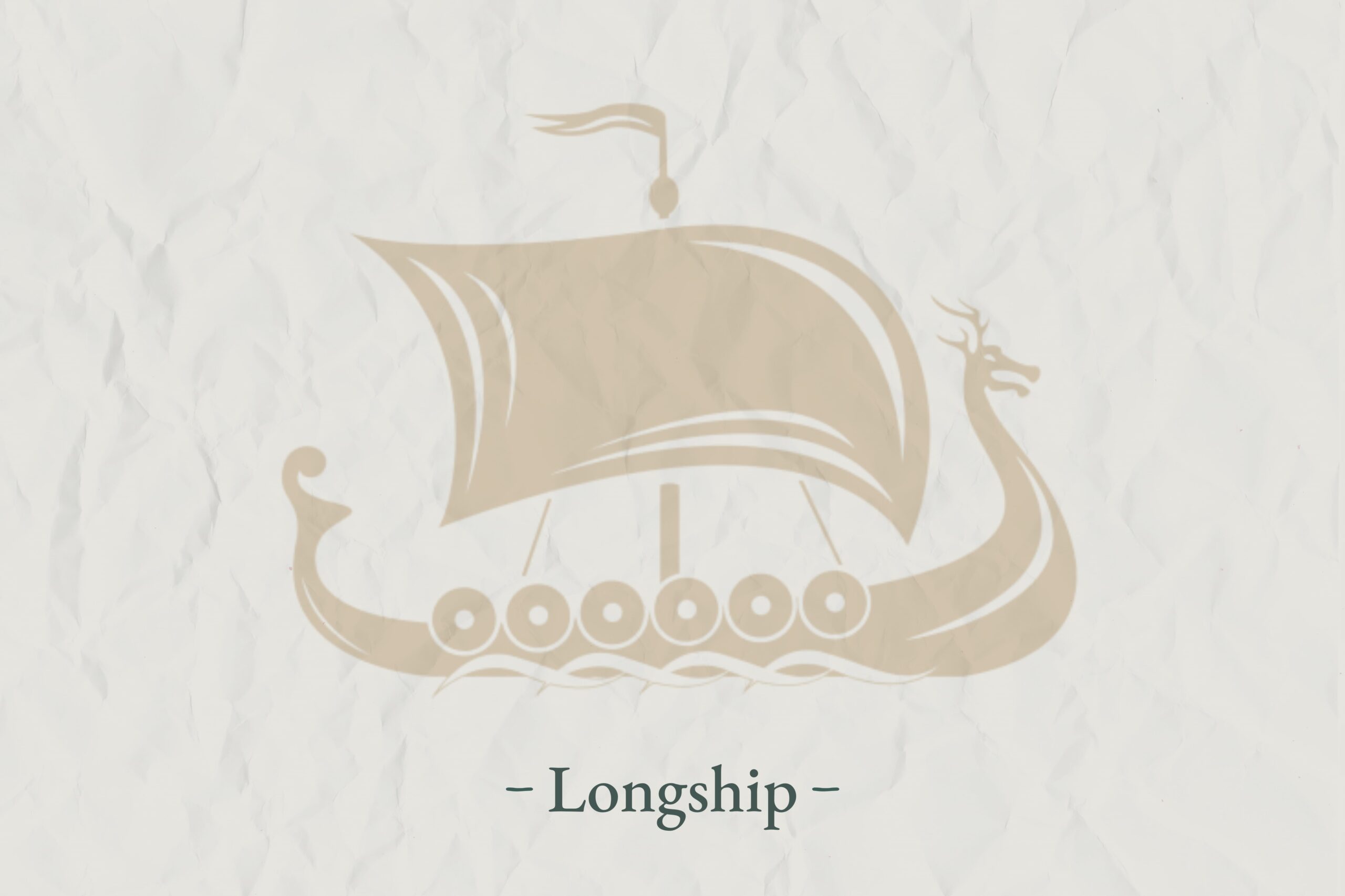
In Nordic mythology, there existed two main ships. One of them is Nalgfar. In the German-Scandinavian mythology, it was a ship made entirely from the nails of the dead. It was the ship of the goddess, Hel. The inhabitants of Skellige believed in the legend of the Drakkar Naglfar from Morekogg, the Drakkar of Hell, which carries the Host of Darkness and Chaos to battle with the Light – Ragnarok – Skelligean variant of Tedd Deireadh. Skíðblaðnir was another ship of gods. It was the ship of Frey. The boat was so large that it could adjust all the Norse gods. The dwarves were so cunning that this enormous in size ship was not only comfortable for all the gods but also foldable and it could fit in a tiny pocket or a small bag. Gods frequently used the vessel to travel overseas, land, and air – the myth shows that Vikings’ ships were so powerful than they could take them anywhere they needed. The Vikings’ attitude to ships becomes even more amazing and striking when we clarify the fact that the vessel on which Vikings were sailing were glorified boats. Vikings were free and fearless people. They did not feel fear of weather conditions or the other obstacles they could face with while crossing the ocean sailing to Iceland, the Mediterranean, or Greenland. They were happy to touch the waves, accept any risk and sail even to unknown countries. Their responsibility, risk-taking, giving up restrictions and constant desire to subdue the world can only make us inspired and impressed with their bravery, curiosity, fearless and purposefulness.
19. Gungnir
In Norse mythology, Gurnir is a powerful weapon that is associated with Odin. In both visual art and poetry, you can see that these connections are deep, powerful and long-lasting. The dwarves, Invaldi’s sons, created this weapon. They were the cleverest and the most cunning smiths in the cosmos, who had also made many other impressive things, such as golden hair of Sif, Skidbladnir, and more.
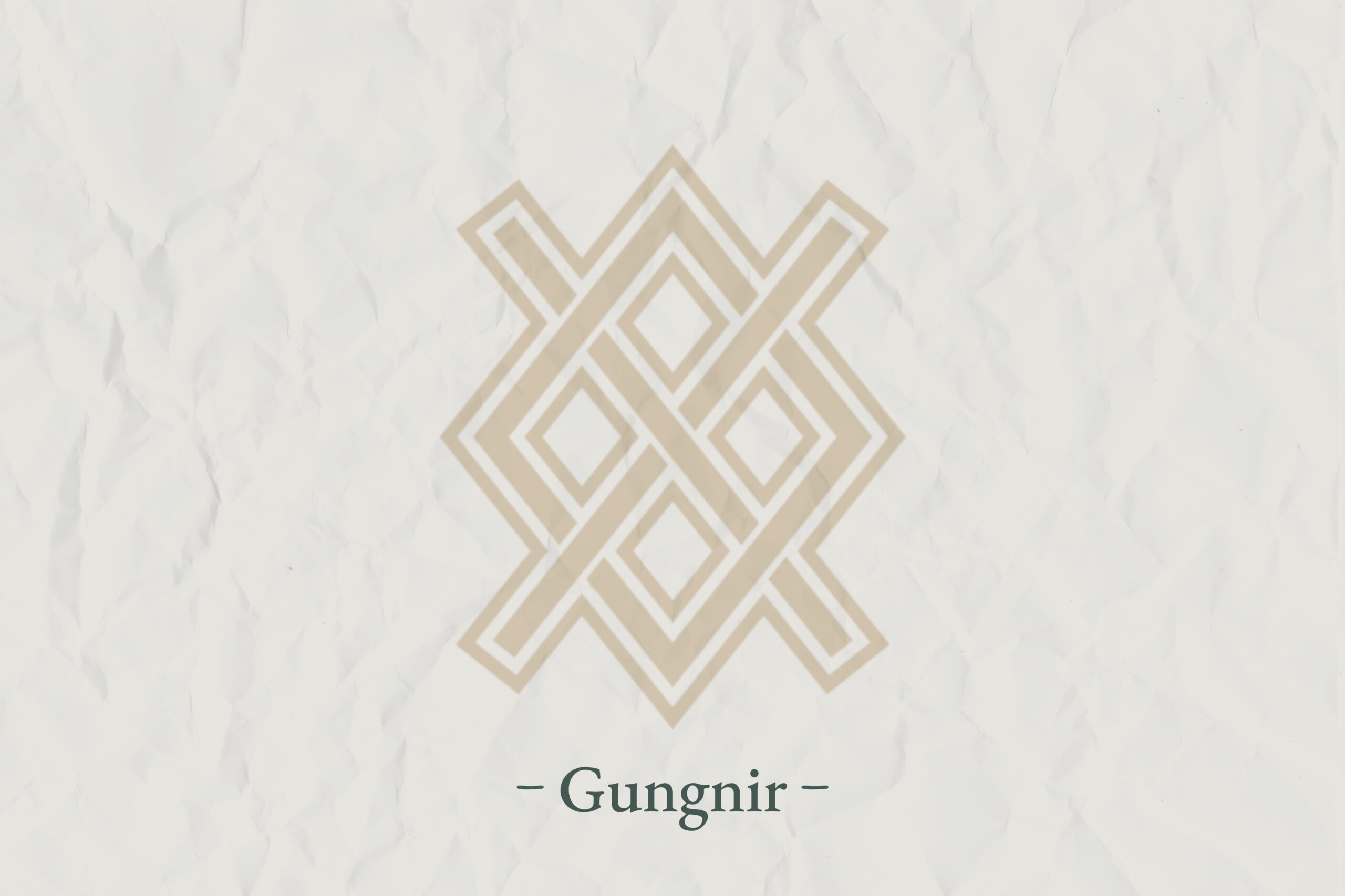
Gurnir is not only the symbol that is associated with Odin, but it is also the symbol related to inspiration, war and wisdom. What is unique about Gurnir? Firstly, when throwing a spear, it always reached the target, and there was no material that could stand against this weapon. After the throw, Gungnir always returns, like the great Thor’s Mjölnir. Swears given on the Gurnir became eternal and indestructible. According to Norse mythology, when Odin decided to sacrifice his life to find out the runes as well as the mysterious secrets they covered, he took his Gurnir and stabbed it through his chest. He had been hanging from the Tree of Life for nine days. As a tradition, Vikings used a spear in combination with hanging for their sacrifices to Odin. As a symbol of victory, Vikings used spears and threw them through their enemies’ lines, as a symbol of sacrificing them to the god Odin. Today, there are many accessories with the Gurnir symbol, symbolizing power, courage, fearlessness, inspiration, wisdom and skill.
20. Raven
Ravens were the symbols, which were the most frequently associated with the Vikings. As was earlier mentioned, Odin, the god of was also the god of ravens flying and feasting of the body of killed. The fact is ravens are clever birds, and it is difficult not to notice their head movement and black color eyes, looking at you as if they are trying to know all about you. The well-known god Odin was always accomplished with two ravens, called Muninn (“Memory”) and Huginn (“Thought”). Every day they flew all over the nine worlds, and when they noticed or heard something unusual, they returned to Odin to tell him. Ravens were also associated with Ragnar Lothbrok. He was one of the most famous Viking heroes. Different chronicles and stories tell about Ragnar’s success, which drove him to France, Finland, England, and Turkey. No matter where his journey lad, he always took raven banner with himself and even his sons were following him (they still took with themselves the raven banner which brought a lot of victories) at the head of the Great Heathen Army.
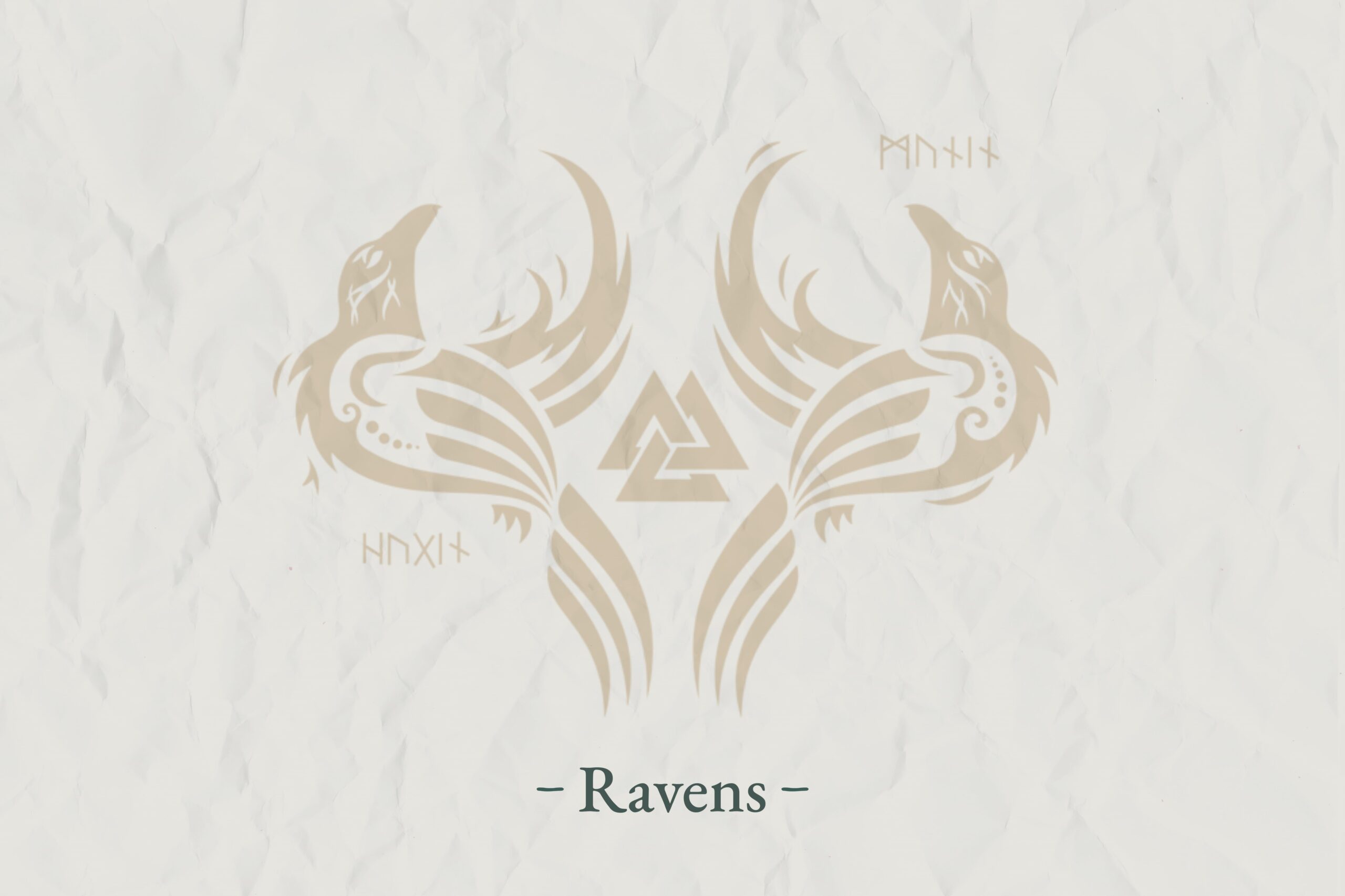
21. 8-Legged Horse
Sleipnir (pronounced “SLAYP-nir”) is Odin’s horse that had eight legs instead of four. His extra legs were coupled with regular legs, which were growing from his shoulders and his haunches. He was considered the “best among horses.” He accompanied Odin on different quests, by surprising people with his power, speed and strength. He could run much faster, kick harder, jump higher and whinny louder than the other horses. No horse could be compared with Sleipnir. He was fearless and brave. There were no obstacles to him. None of the elements could slow Odin’s horse, and if there was a necessity, he could also fly through the air as well as could swim through water. What is more, Sleipnic could ferry Odin in and out of Hell (the realm of the dead).In Norse mythology, the horses that had eight legs symbolized means of conveying souls across the nine worlds. Sleipnir has a deep meaning, symbolizing speed, power, strength, perception, eternal life surety, transcendence, and travel. Today there is a wide assortment of various accessories using the image of the influential and well-known eight-legged horse of Odin – Sleipnir. The symbol of Sleipnir is of particular importance for athletes, travellers, and those who lost their way in life or those who lost their love. It is a great symbol, able to bring power and spiritual protection and enlightenment to everyone who needs it.
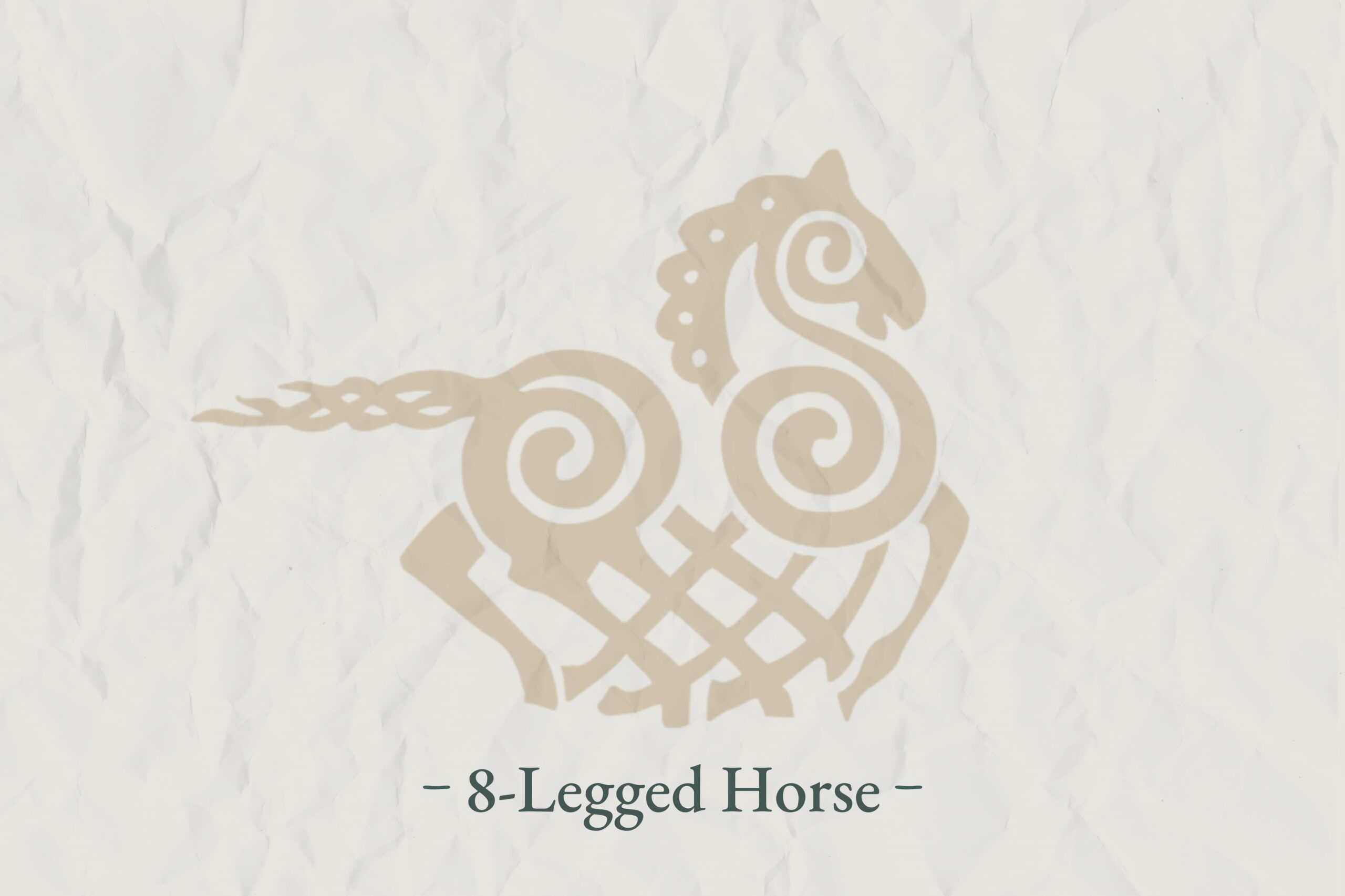
Sleipnir has a deep meaning, symbolizing speed, power, strength, perception, eternal life surety, transcendence, and travel. Today there is a wide assortment of various accessories using the image of the influential and well-known eight-legged horse of Odin – Sleipnir. The symbol of Sleipnir is of particular importance for athletes, travellers, and those who lost their way in life or those who lost their love. It is a great symbol, able to bring power and spiritual protection and enlightenment to everyone who needs it.
22. Dragons
This is not a secret that Vikings had a lot of stories about dragons and large, giant serpents. Many of these stories were left on the piece of paper, with the help of which we can analyze their art today. Long Vikings’ ships were also known as «dragon ships,” because not only they were associated with crush, battle and fearlessness of the brave warriors Vikings, but also because of the shape and design of their ships that were characterized with carved dragon-headed prows and sleek design. Sometimes the heads of dragons were removed, symbolizing that Vikings had come in peace. The ancient Norse dragons had long bodies, which look serpentine. Not all of them had wings or could breathe fire.
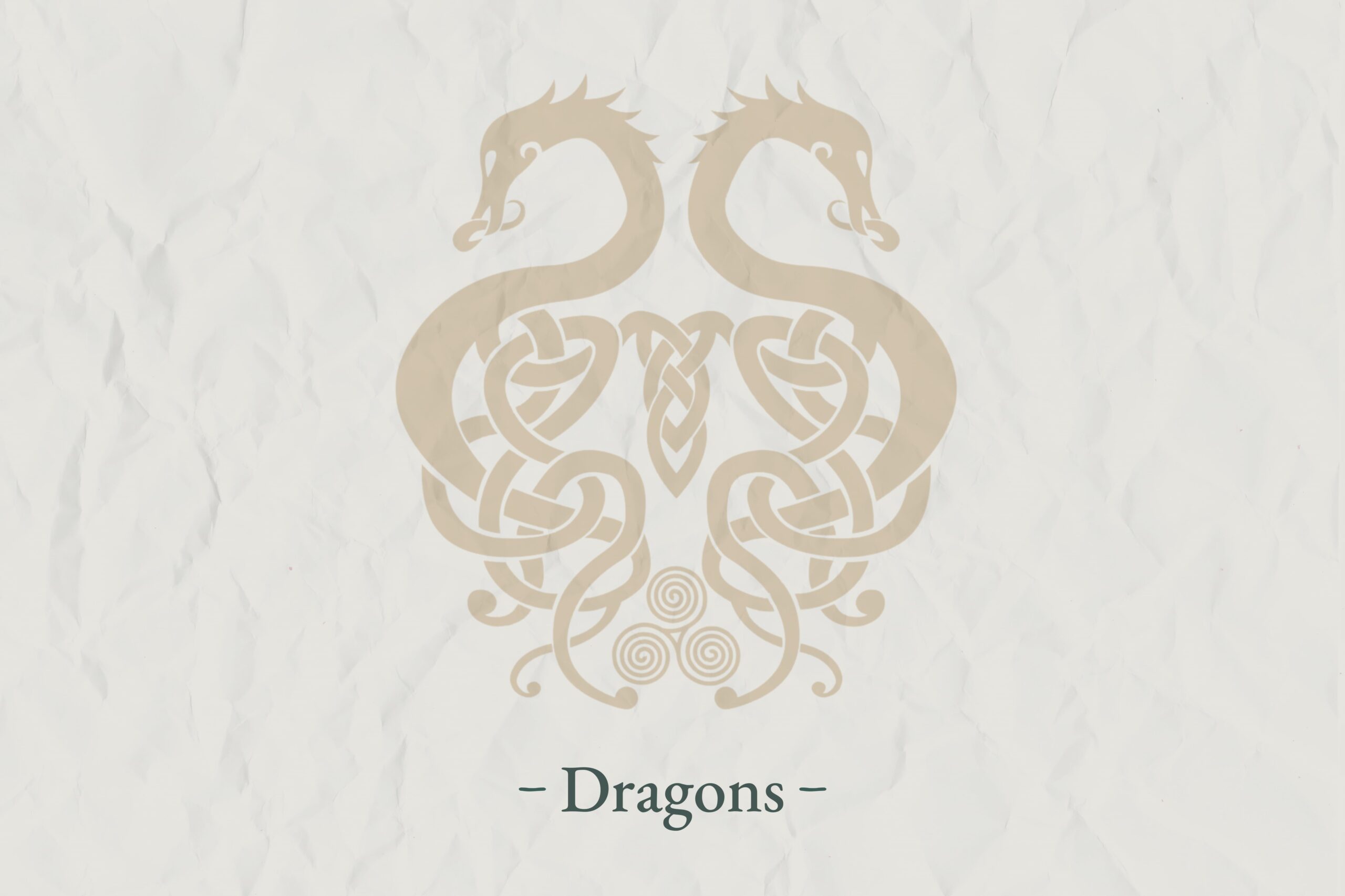
Some of the dragons were not only powerful monsters, but were also dominant cosmic powers. Níðhöggr was a Norse creature. It waves around the root of the Tree of Life, desiring to destroy it and dreaming of Ragnarok. The other Norse creature was Midgard Serpent. Its size was so large that it could cover all the world, holding oceans. Norse mythology does not describe all the dragons immeasurable in size. Not all of them could cover the entire world. A well-known hero Beowulf took its designation to struggle against such creations. Fáfnir was the most impressive dragons mentioned in Norse mythology. Originally, Fáfnir was an ordinary dwarf. Later on, because of his betrayal and greed he turned into an ugly monster, sleeping on a large heap of gold. The dragon Fáfnir demonstrated that dragons were the most impressive and shocking features that are not only large and cruel; most of the dragons were quite clever; thus, it was mostly impossible to kill them. Dragons were the symbols of wealth. Although the Norse people did not identify dragons with the Devil, the dragon-like Fáfnir could represent the dark side of human nature. Dragons in most of the cases represent chaos, danger, cataclysm, as well as new changes or events in life.
23. Cats
During the Viking age, it was considered that cats and bears were spirit animals of Freya – the Vanir goodness. Freya was the most recognized, reputable and appreciated among all the goddesses or gods in the Norse mythology. She was a goodness of sex, romantic desire, and love. In addition to this, she was also a fearless warrior always ready to ride into the battle with Hildisvini – wild boar. As well as Odin, Freya chose only the bravest warriors for the afterlife.
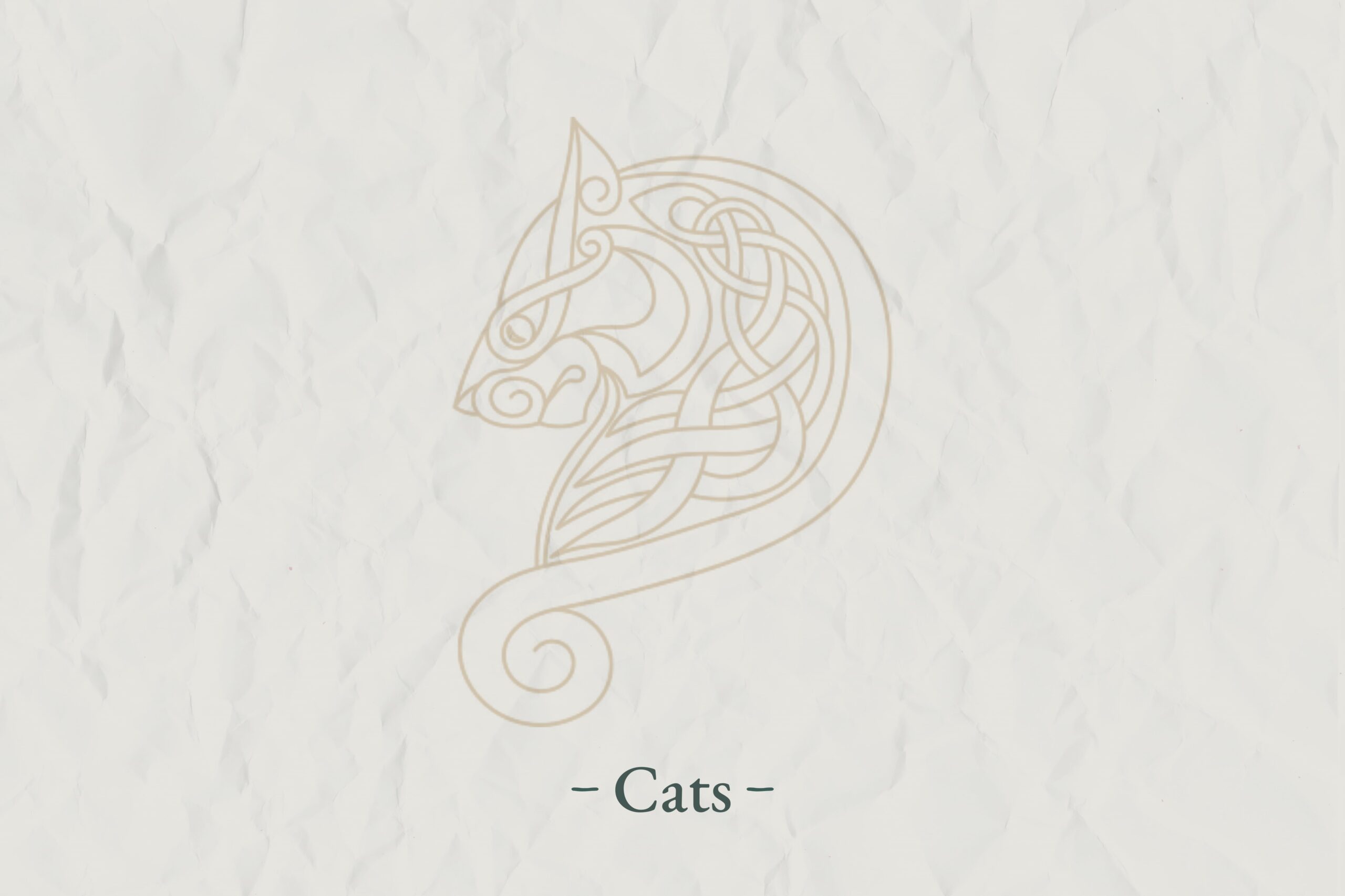
Vikings also believed that Freya’s tears could turn into gold or amber. She was a goddess of fertility. Freya was frequently described not only as a desired object by gods. Because of her unbridled sexuality, she was also an object of desire of elves, giants, and men.
24. Bears
The bear was considered the bravest animals for Vikings. The bear sign can make any man, even the most courageous step away immediately. Bears are large, fearless and powerful and their fur can also resist sharp weapons. This is easy to understand why Vikings adored them and wanted to look like bears.
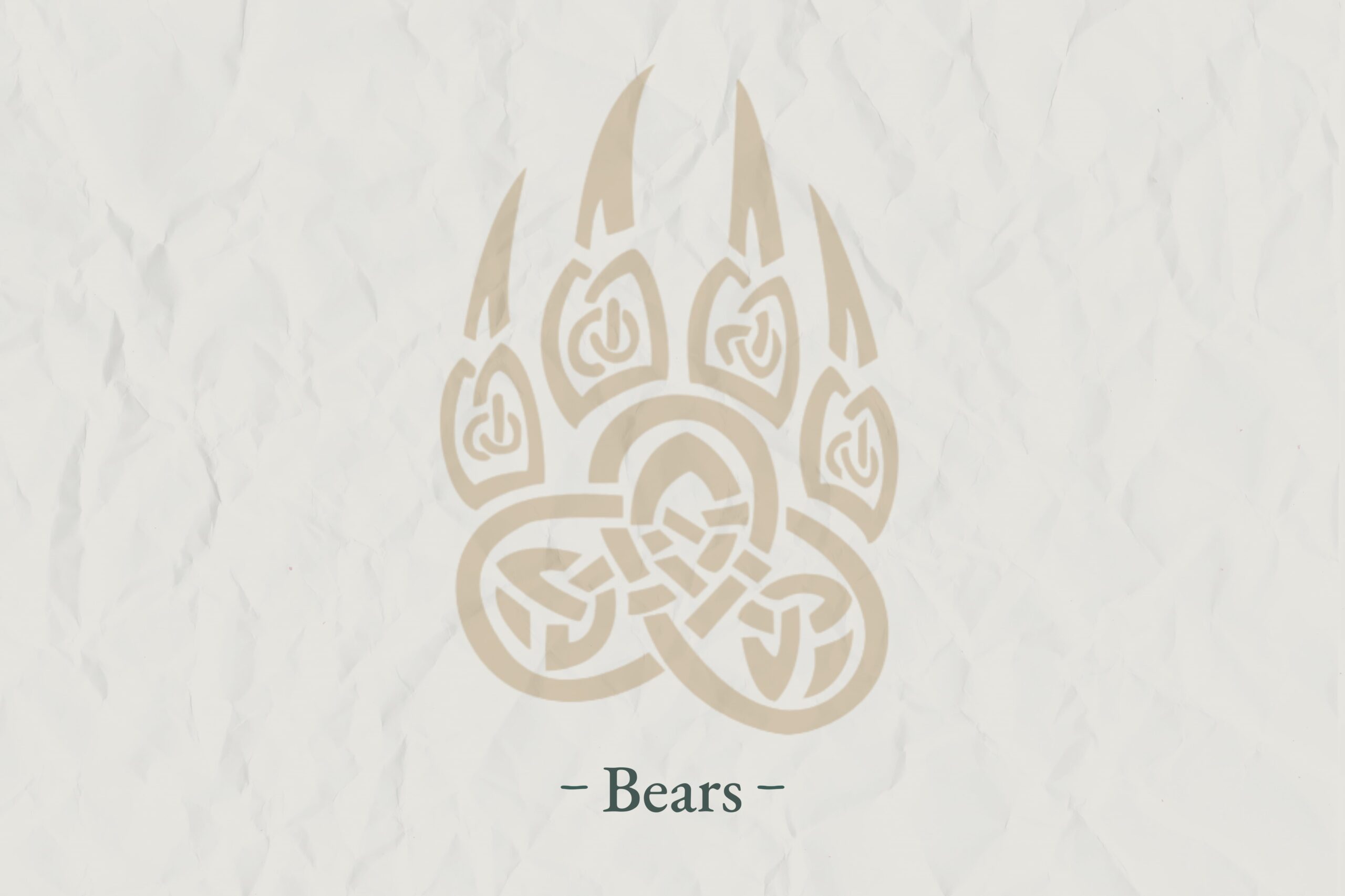
Even Viking kinds loved to have bears as their home pets. The bear symbol was sacred to Odin and it has inspired berserkers –the most well-known class of Vikings. Berserker gained bear’s spirit and bravery. They were brave warriors, real champions of the Viking age. Before the battles, berserkers took the bears’ spirit and essence. This symbolized that he became as strong as a bear in any battle. Berserkers were putting on the skin of the bear (some warriors could only do it literary) and used it as armor. The warrior could even have no armor and have bare skin. In comparison with ordinary Vikings, berserker did not fight as a command. Instead of this, he went above the line of the ordinary Vikings, as this was a way to inspire his army as well as show their bravery, curiosity and fearless to their enemies. Berserkers were forming a strong line of warriors, having only a Dane axe. By doing so, they were able to disrupt their foes’ cohesion and make holes through which their army could go or dive through.
25. Boars
There were different animals that served as symbols of faith during the Viking Age. Boars were not the exclusion. Wild boars are shy animals and they try to avoid people. However, if you corner it, this animal becomes a formidable beast. During the ancient times, the wild boar has become a symbol of braver, curiosity and ferocity.
Most of those animals were fylgia – attendant spirits that accompanied their gods. Boar was the fylgia of Freya. It was called Hildisvini (“Battle Swine”). Hildisvini always accompanied Freya in wars. Freya’s brother Freyr or Frey (he has the god of male fertility, sex, wealth, bounty, and peace) also had boar-fylgia called Gullinborsti. The Gullinborsti symbol made any Viking think of peace and happiness.
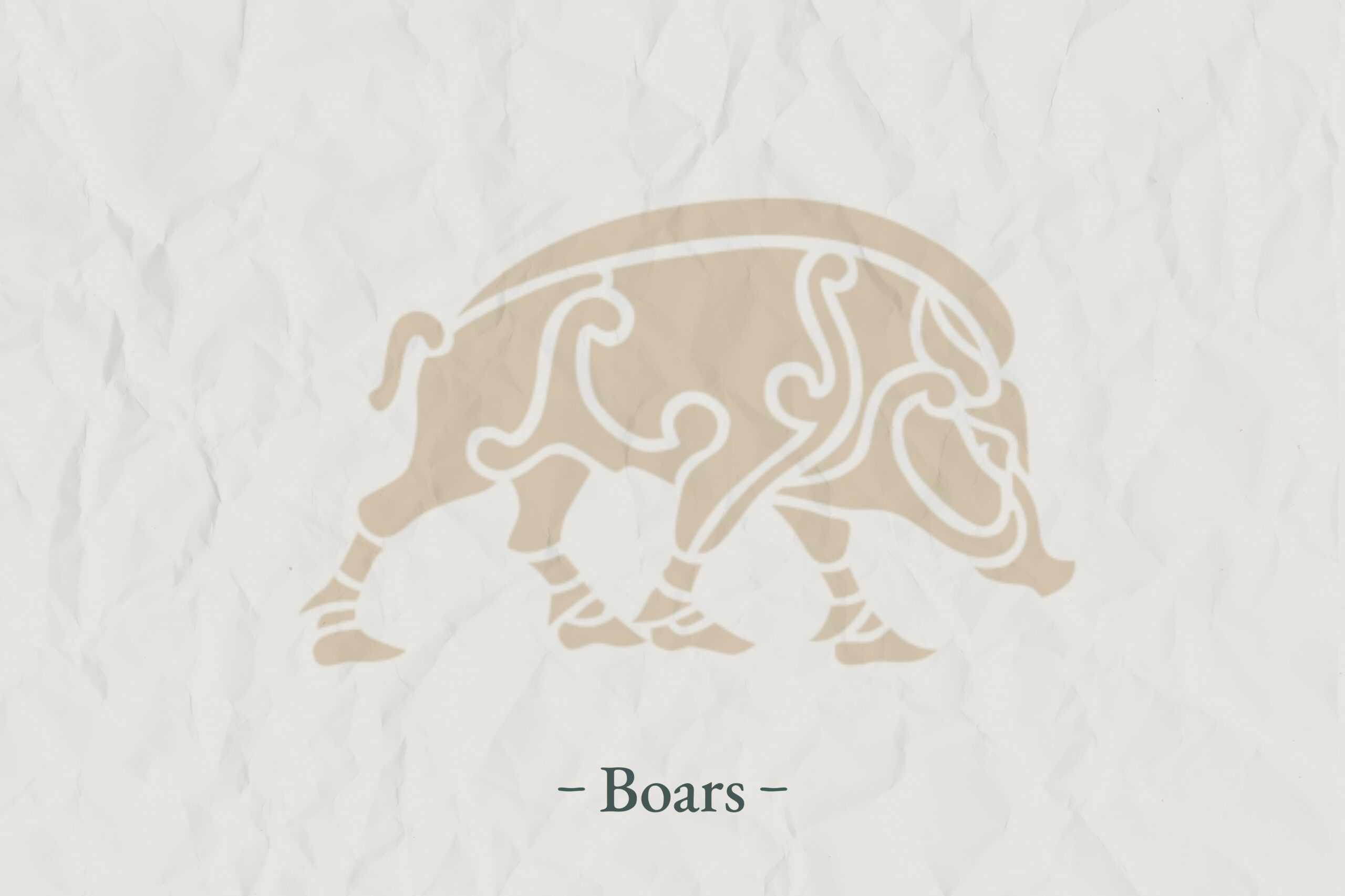
26. Wolves
In comparison with all the other Viking symbols, the symbol of Wolf in the Viking Age had the most controversy. The most frequently the illustration of Wolf is the villain. Besides, there were times when wolves were helpful. In Norse mythology, wolves could represent both positive and negative sides. The most popular Wolf in the Norse mythology was Fenrir, the son of Loki, the Norse fraud and trickster. It was so because of its direct connection to Ragnarok. Fenrir was the most dangerous creature, and his appearance was the sign of incredible danger and horror. It was so because Fenrir was the Wolf who had swallowed Odin in the dark days of Ragnarok. There are many positive and negative features of Fenrir in Norse mythology. However, we should encounter the ones that made him a Viking symbol. The most valuable qualities of this Wolf were independence, family orientation, loyalty, power, bravery and a strong desire to free himself.
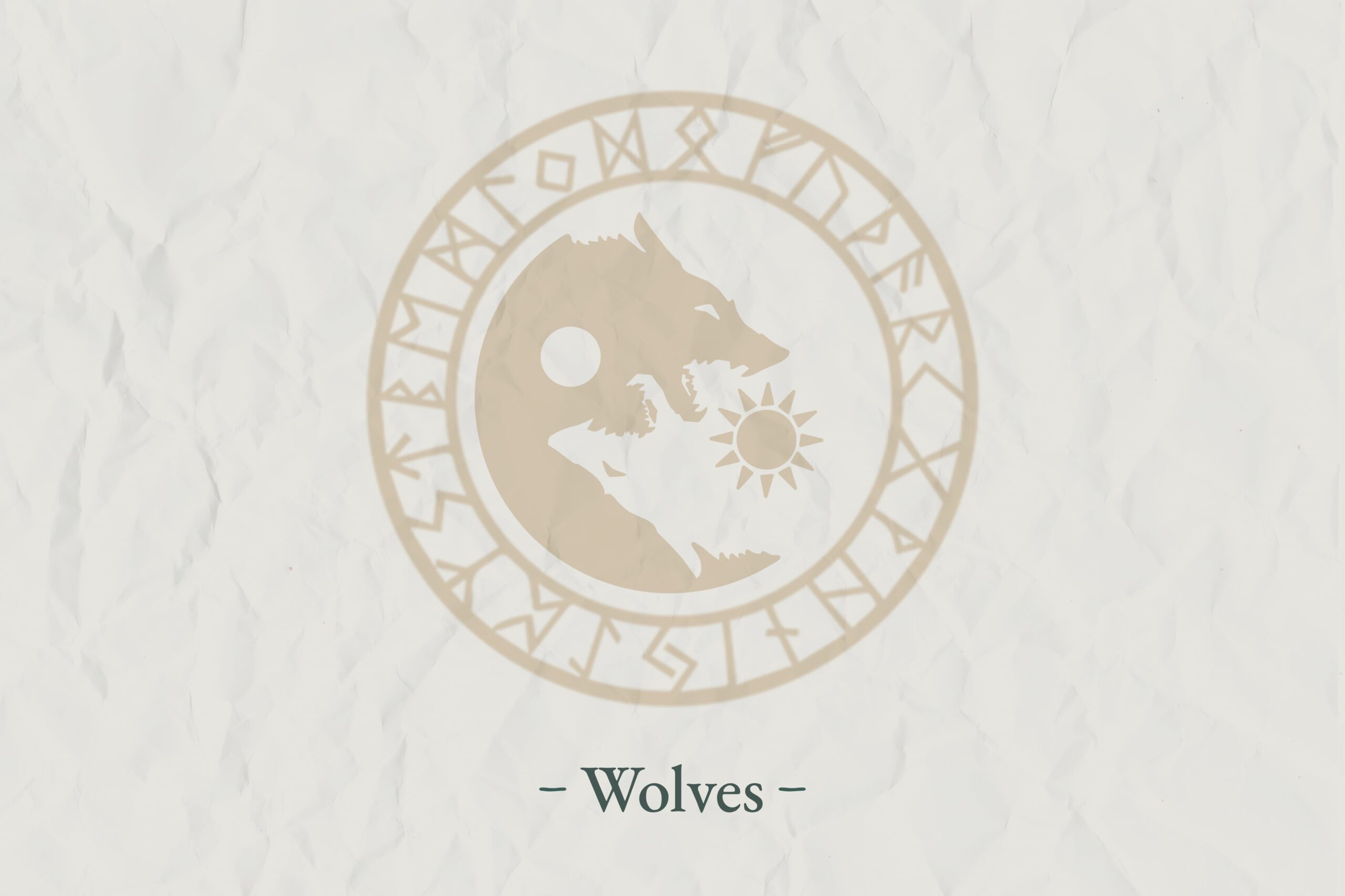
Conclusion
These twenty-six viking symbols mentioned above as well as many other that existed in the Viking age and were widely used as inspirational symbols for most of Vikings and Norse, or what is more, it has the same importance as religious iconography has today for us. Although today we consider Vikings’ symbols only Norse mythology, it should be noted that they were not only symbols but also were highly crucial for Vikings as well as our religion is essential for us today. They were confident that special symbols could change their life, help them during wars to get a victory over their foes. It is not a secret that the pre-Christian Scandinavia was imbued with symbols, spirits and gods of the Norse pantheon. Everything was inspired by these entities: sky, air, water and the ground. Vikings believed that when the thunder boomed, it was Thor, driving his chariot across the heavens. When everything was flourishing or a baby was born, it was Freya or Frey (her brother) as both of them were https://viking.style/mysterious-viking-symbol-for-new-beginnings/Vikings symbols for family and fertility. Odin was one of the most important gods in Norse mythology. He could change mostly everything, as had enormous power and strength. Concerning the Tree of Life or Yggdrasil, it was supporting the universe between gods and humans. Nine different worlds (each one was home for different beings: gods, elves, dwarves, giants, humans, etc.) were supported by Yggdrasil too. In the same way as people researching for support, faith and apologize in the viking symbols of their religion, the people of the Scandinavian origin believed in different symbols as the representations of someone’s presence and readiness to help them any time they needed. No matter how difficult, strange or cruel the world could seem, it was believed that when holding an amulet of special meaning nothing terrible might happen to them, as someone was always looking out of them. As, for example, when the Vikings were holding an amulet with Thor’s Hammer, they were sure that he was watching over their lives, offering protection, power, faith and peace.

